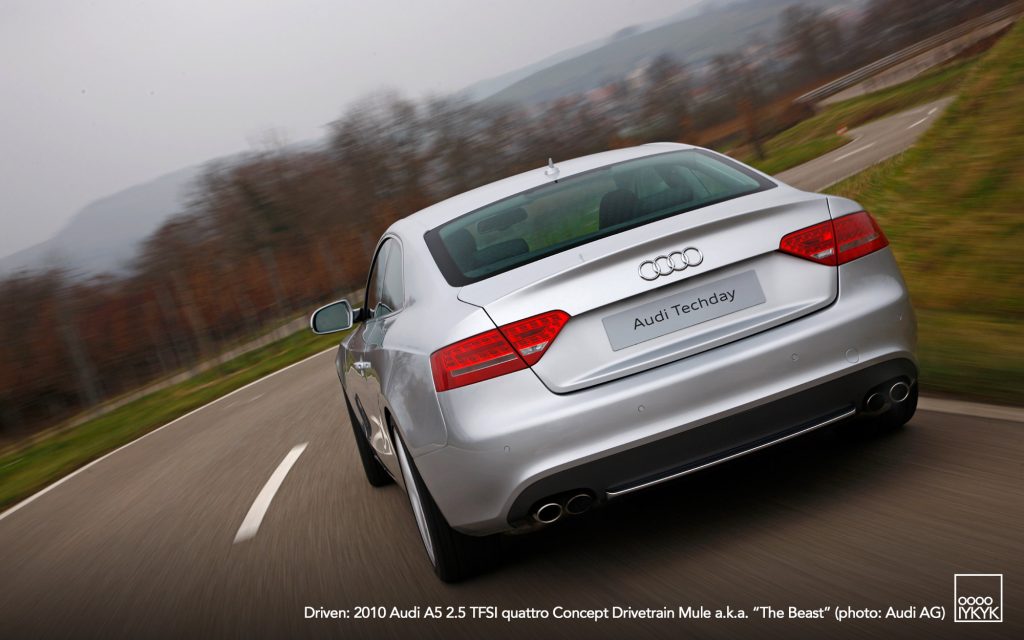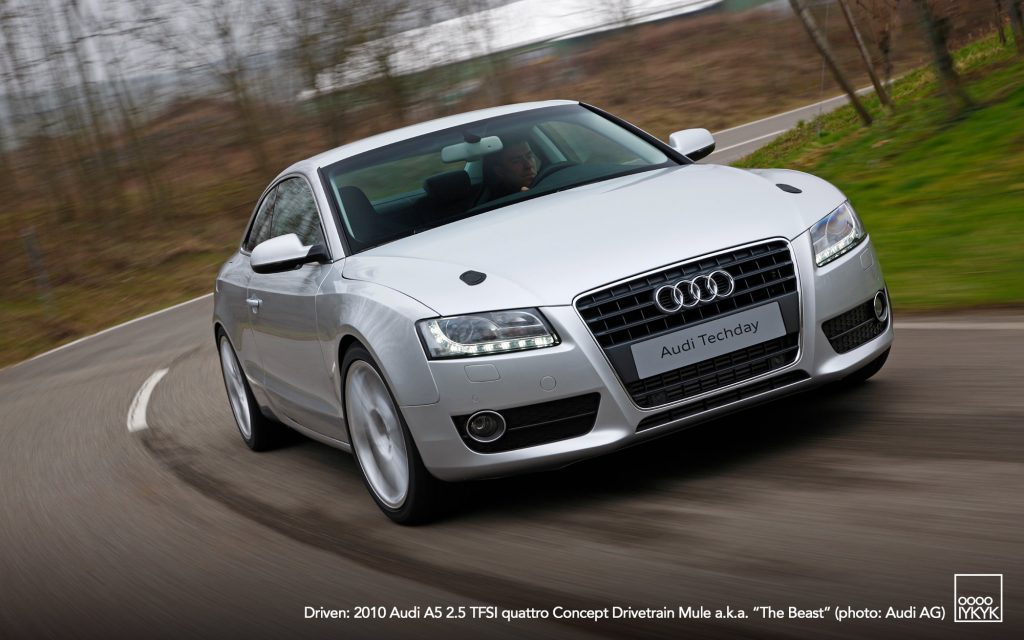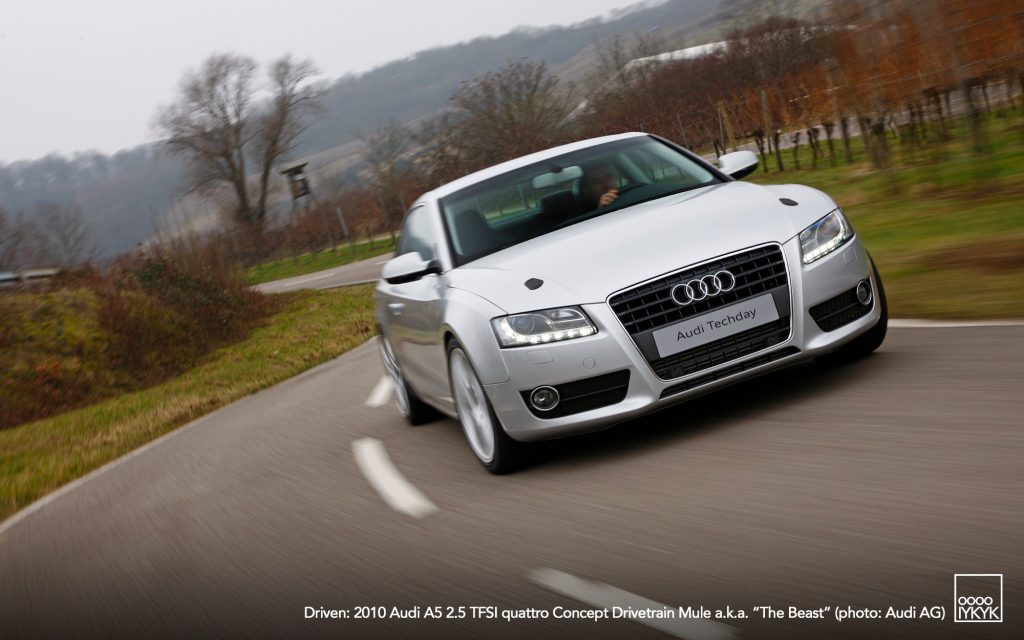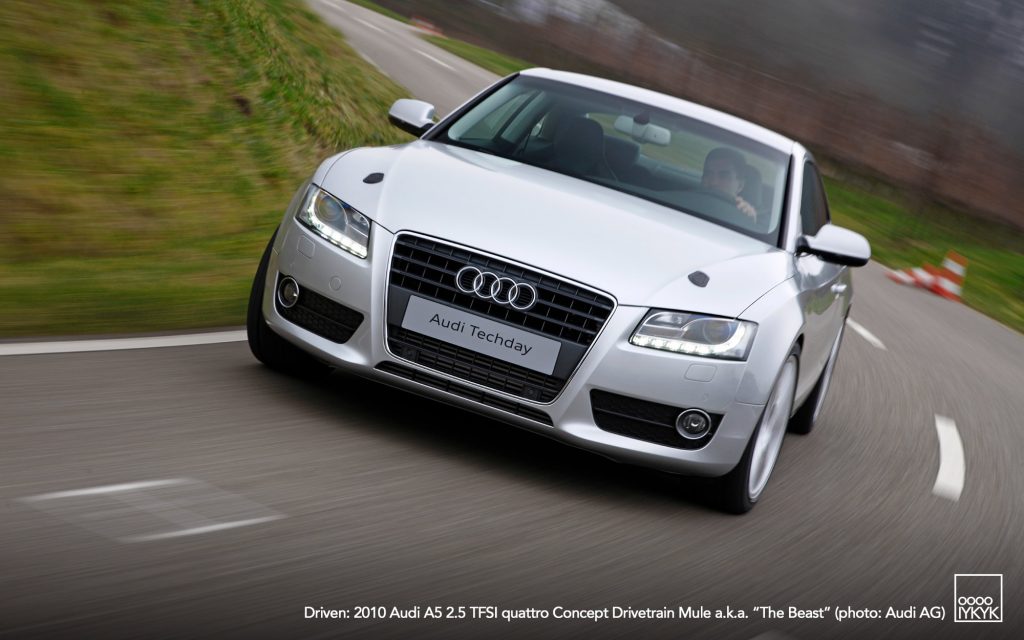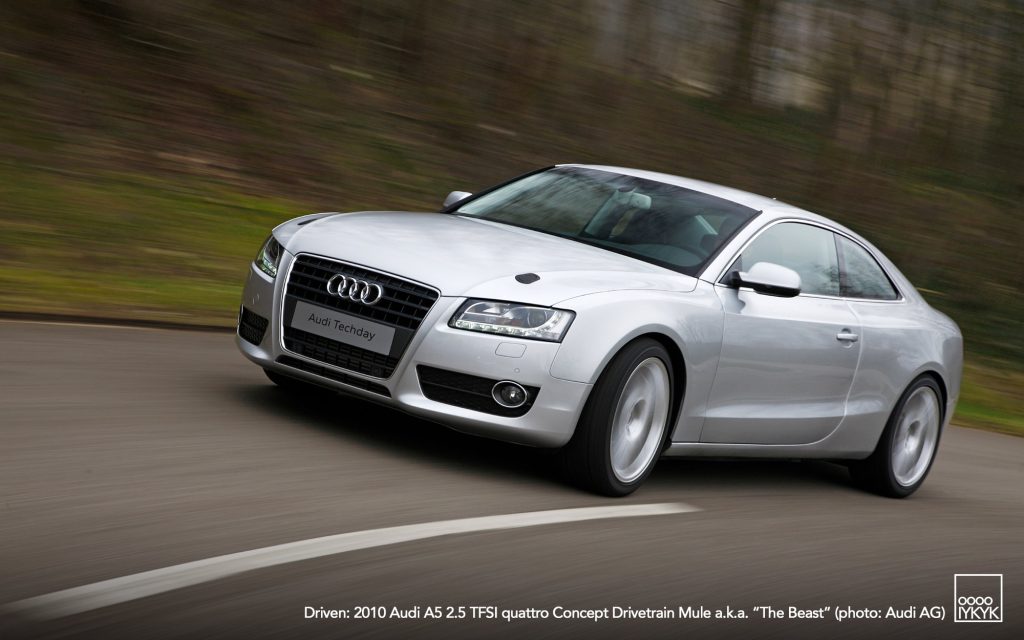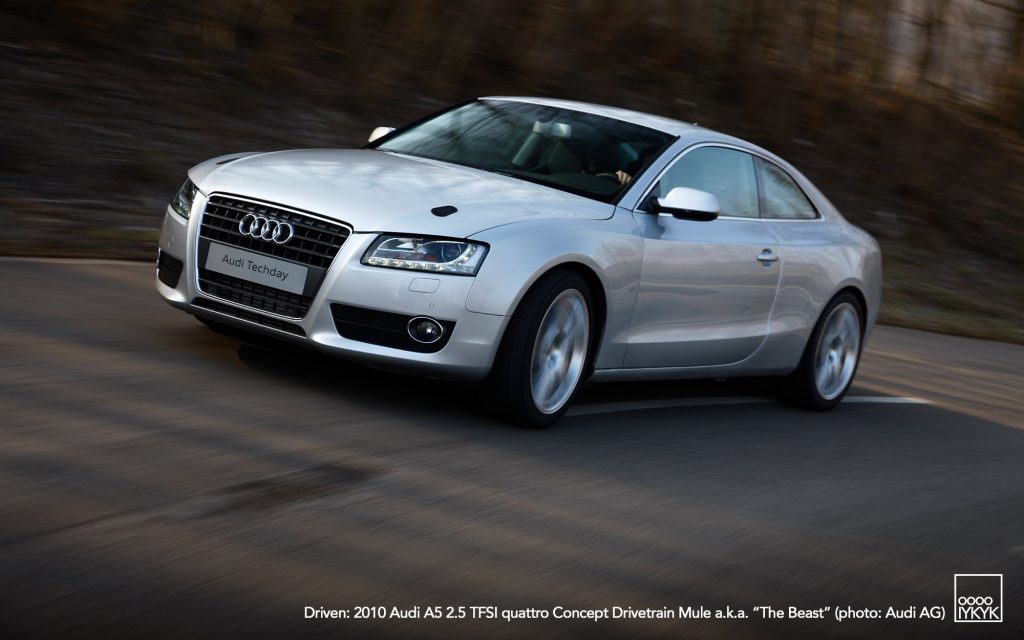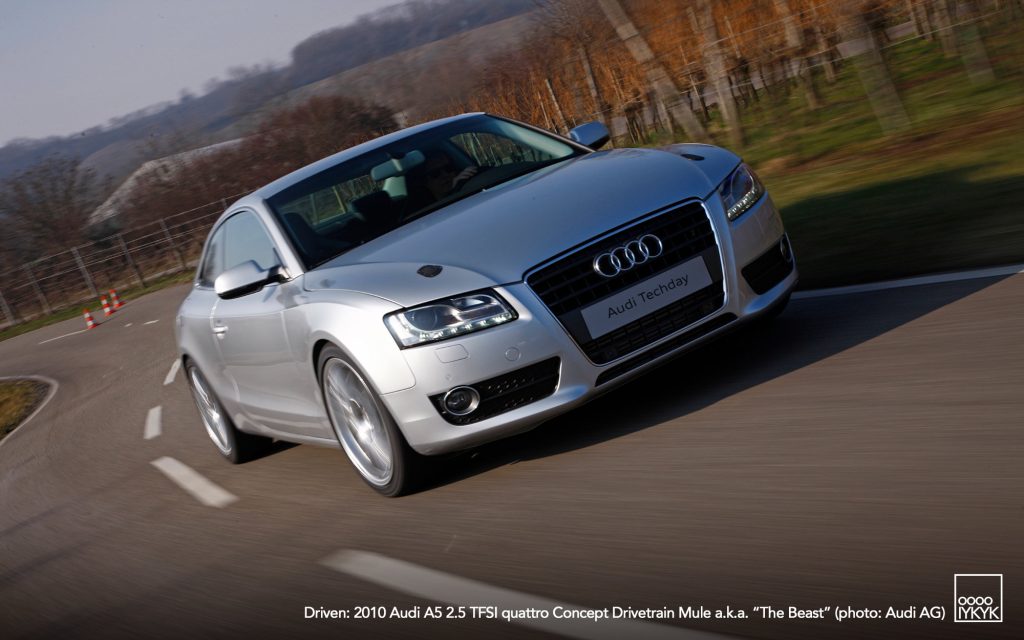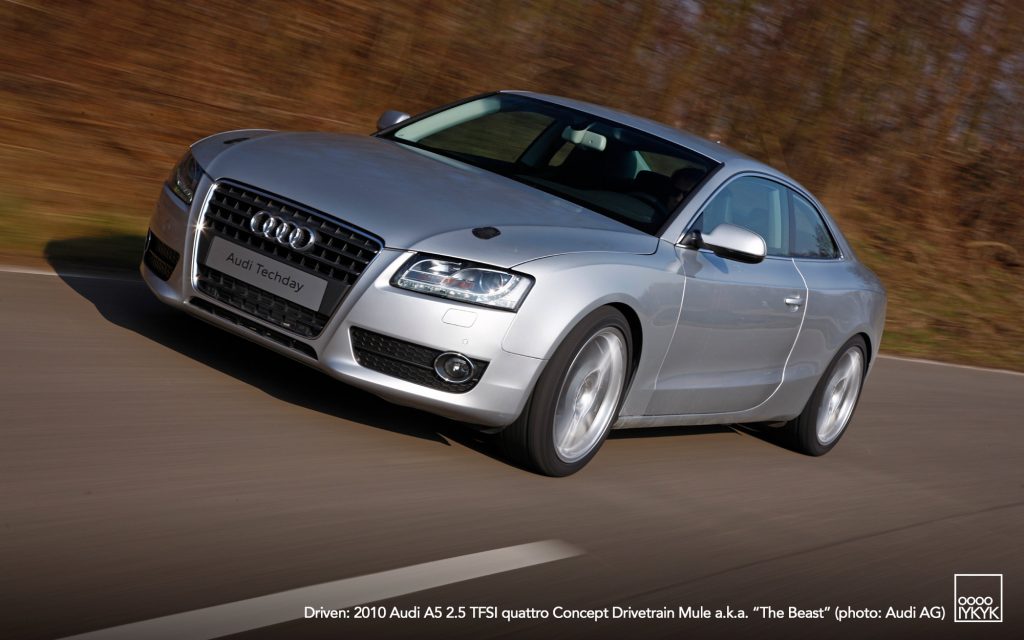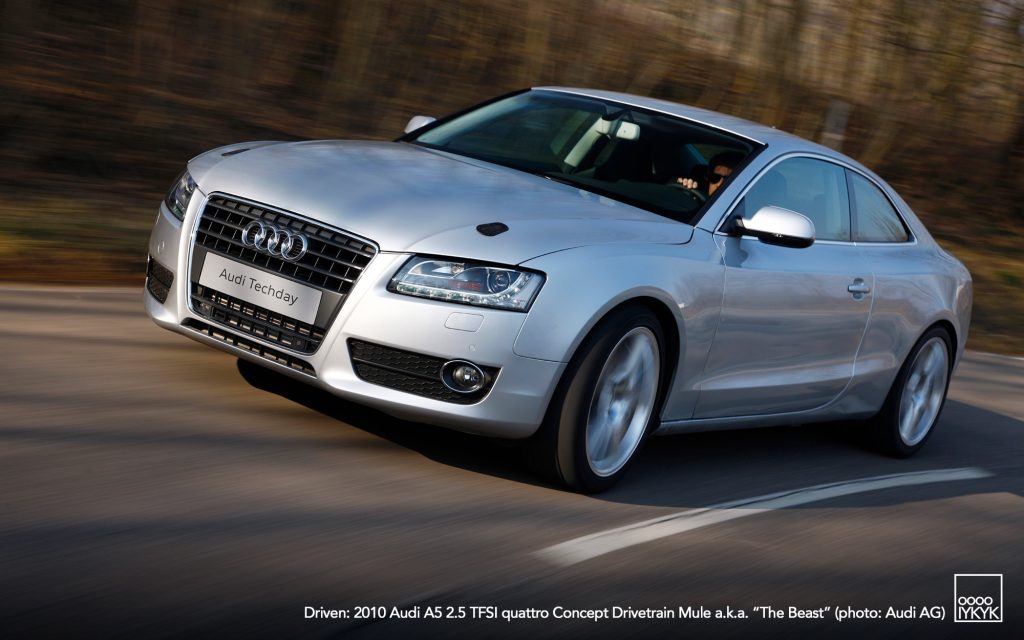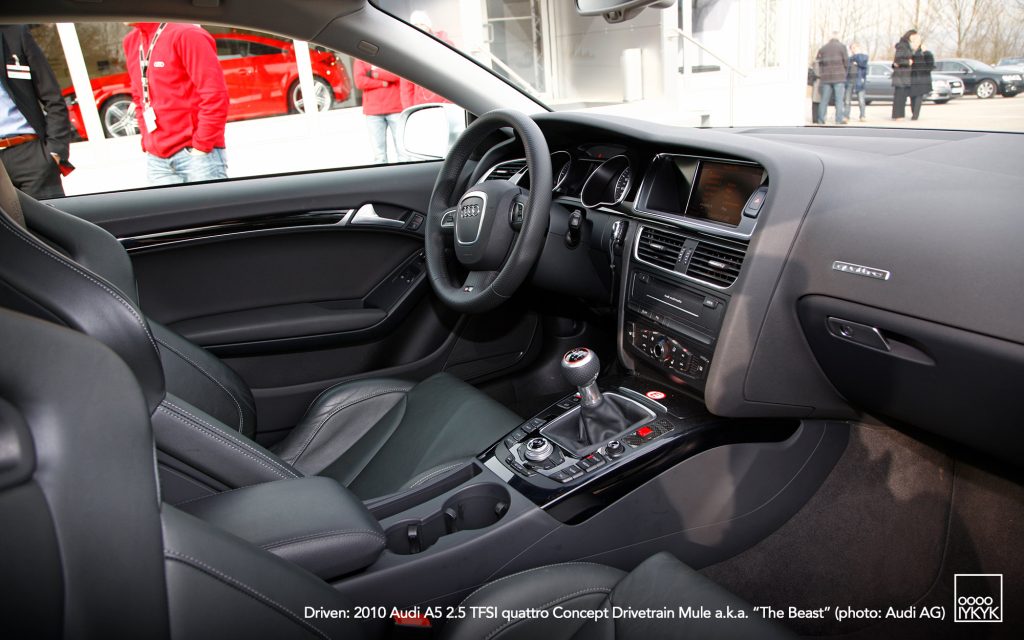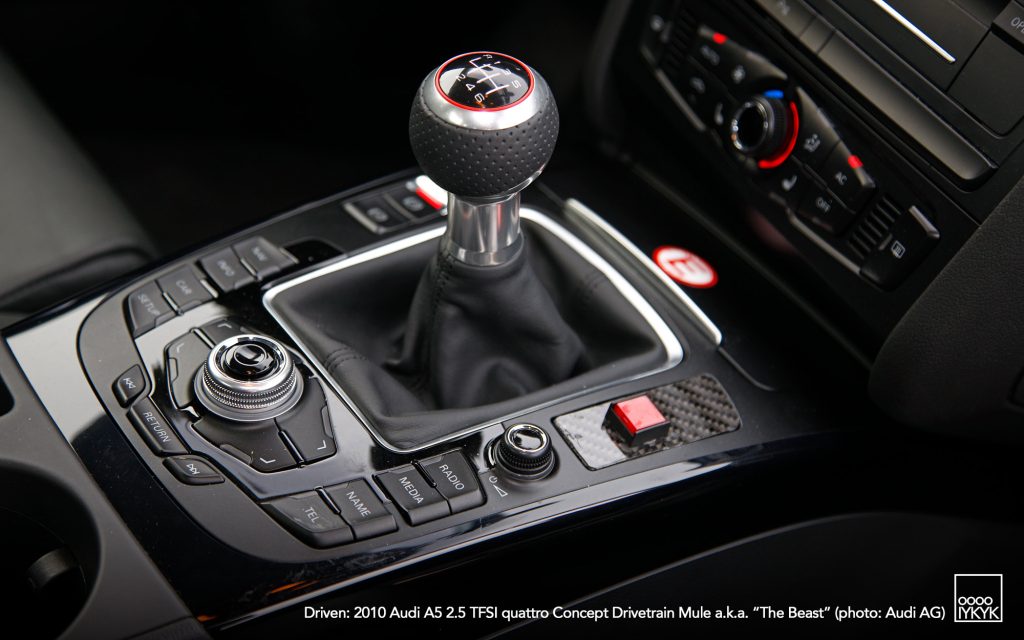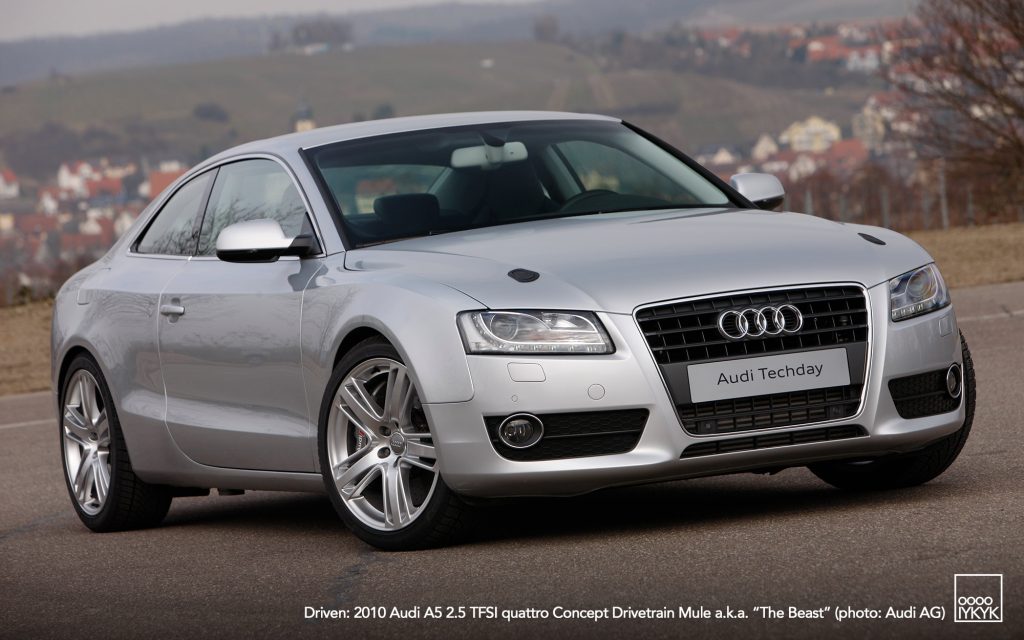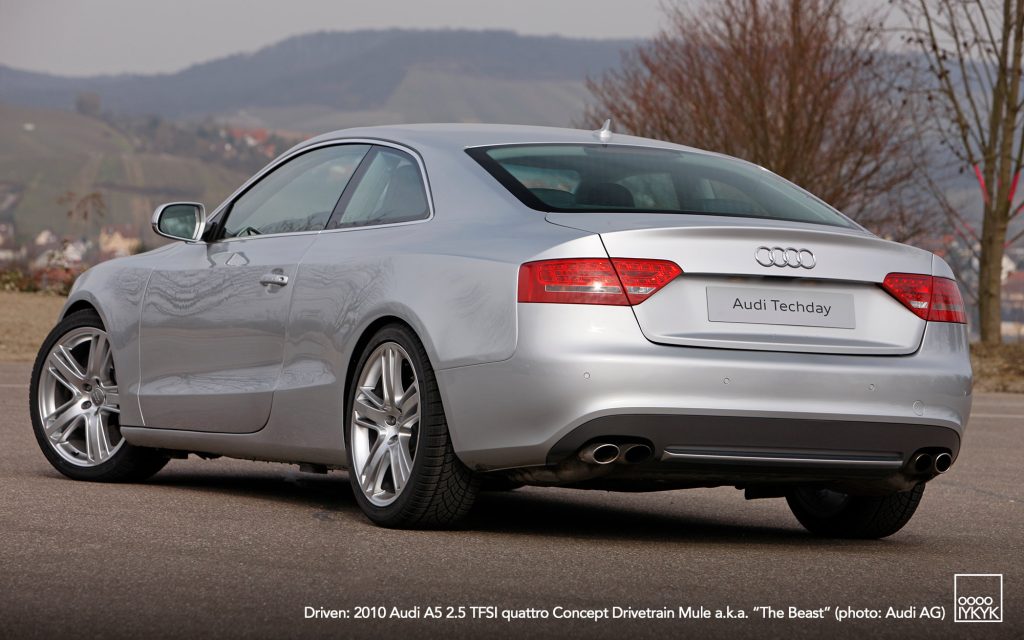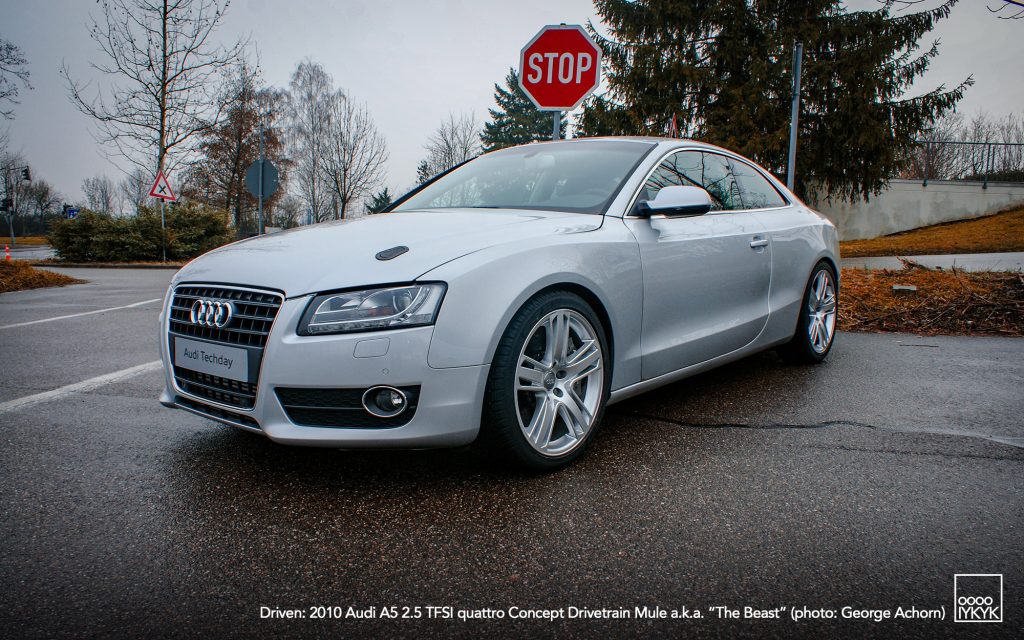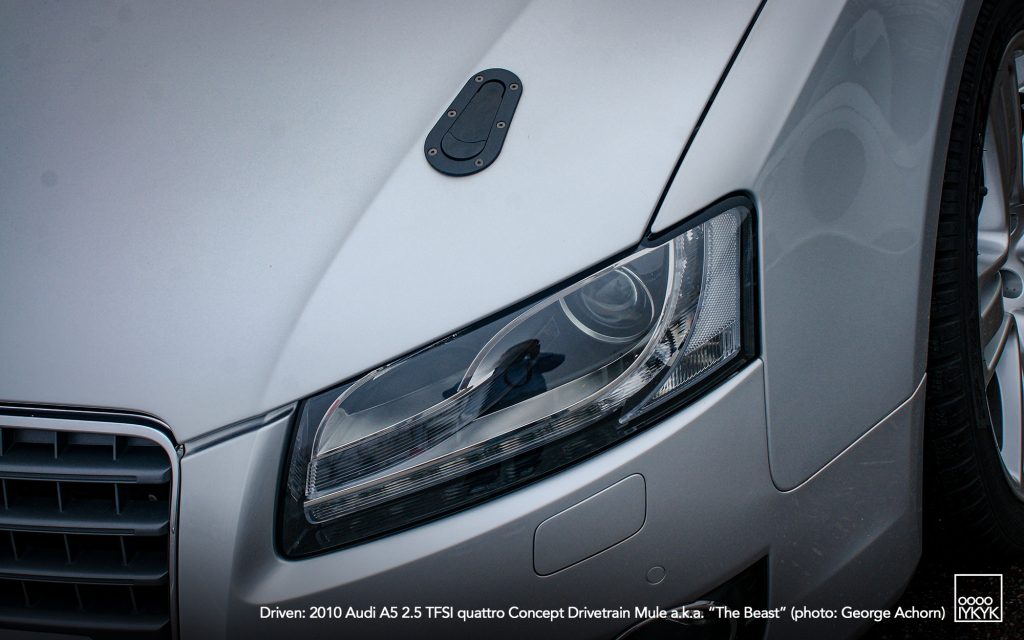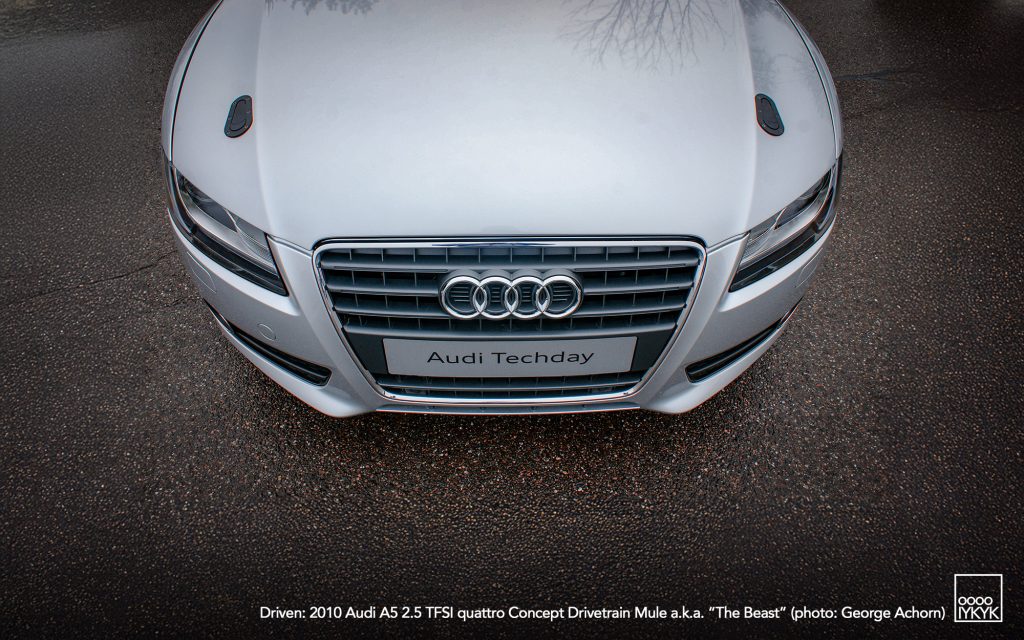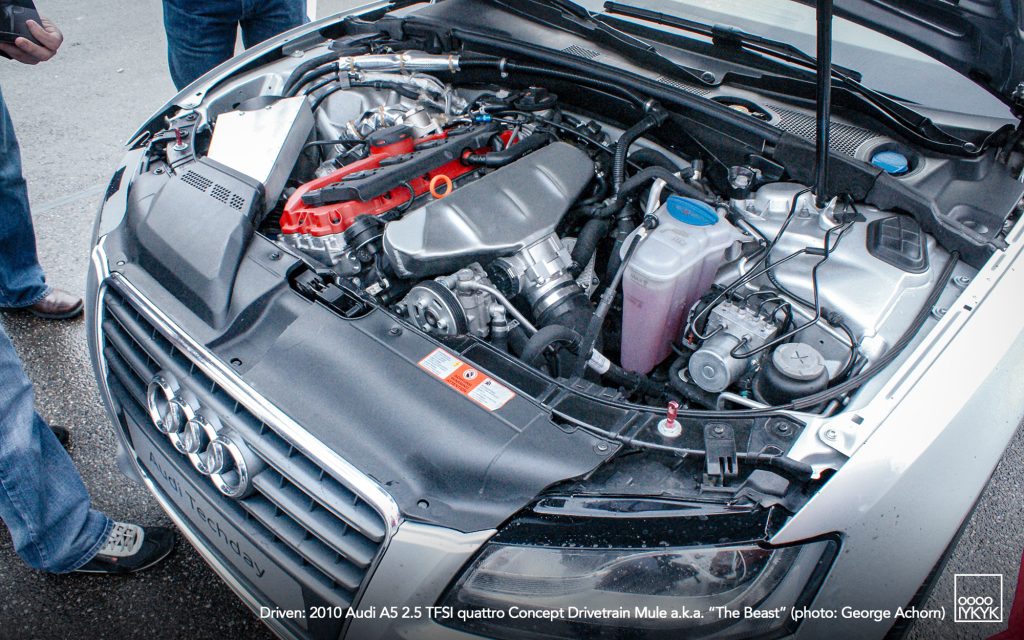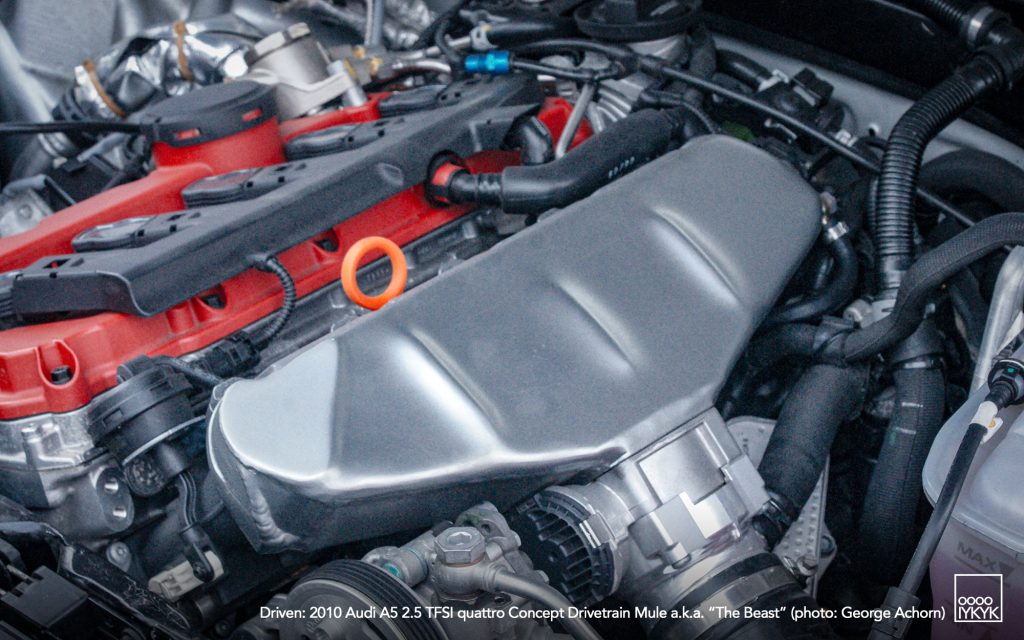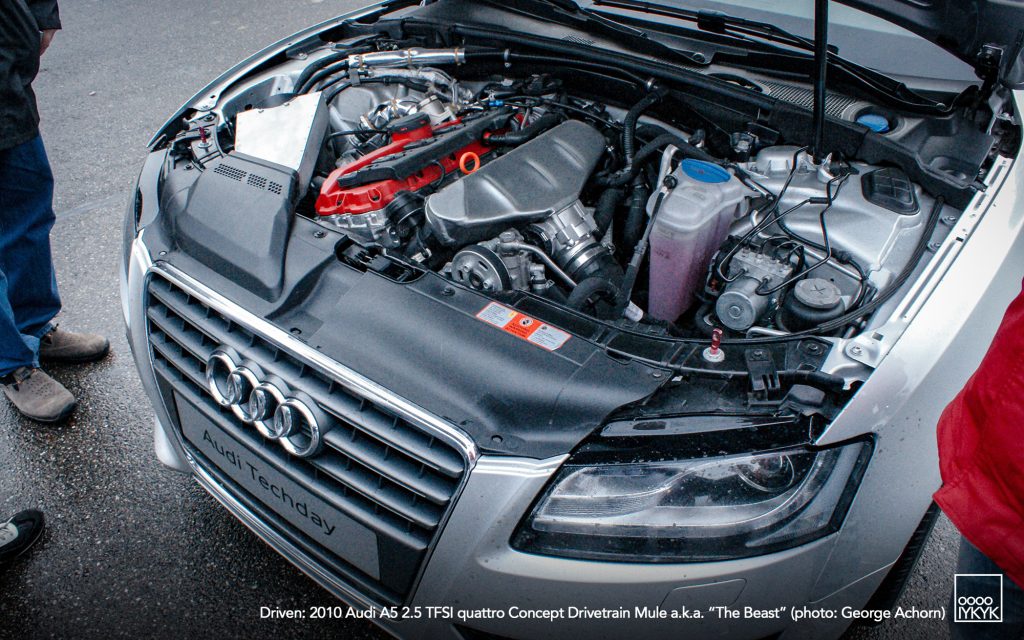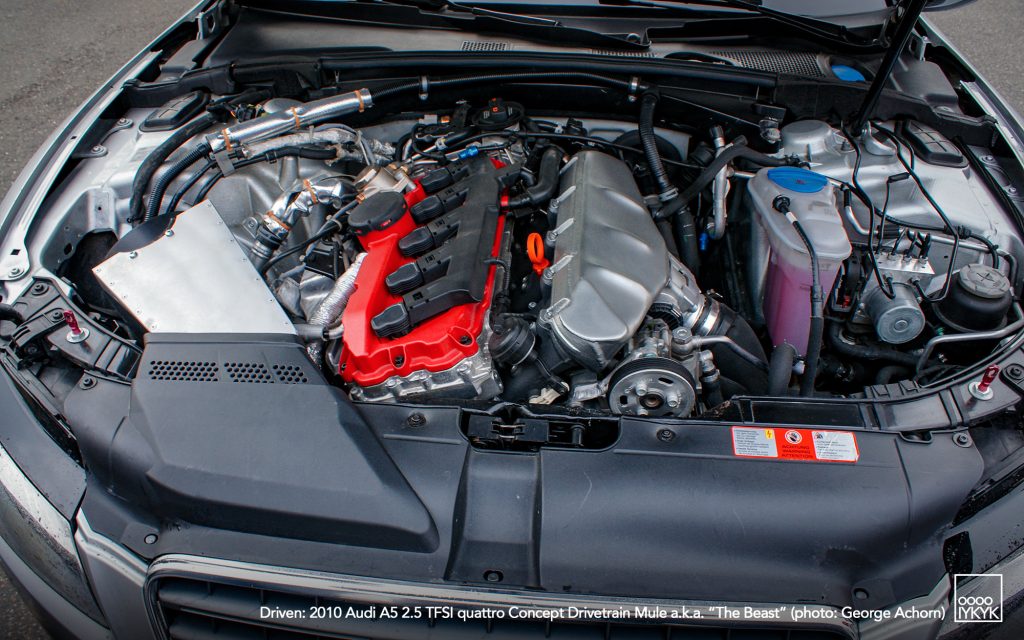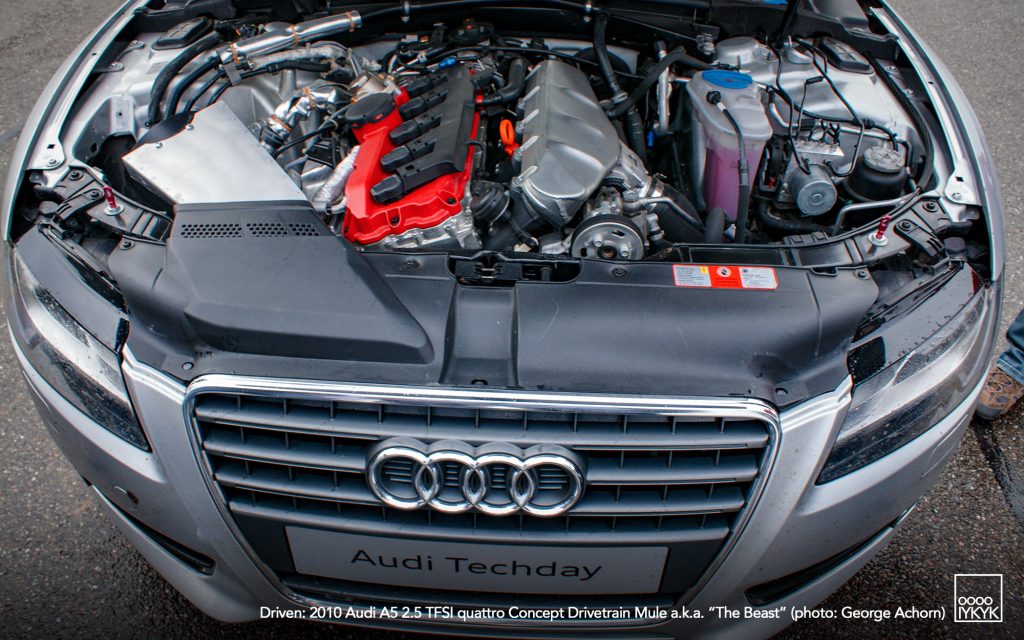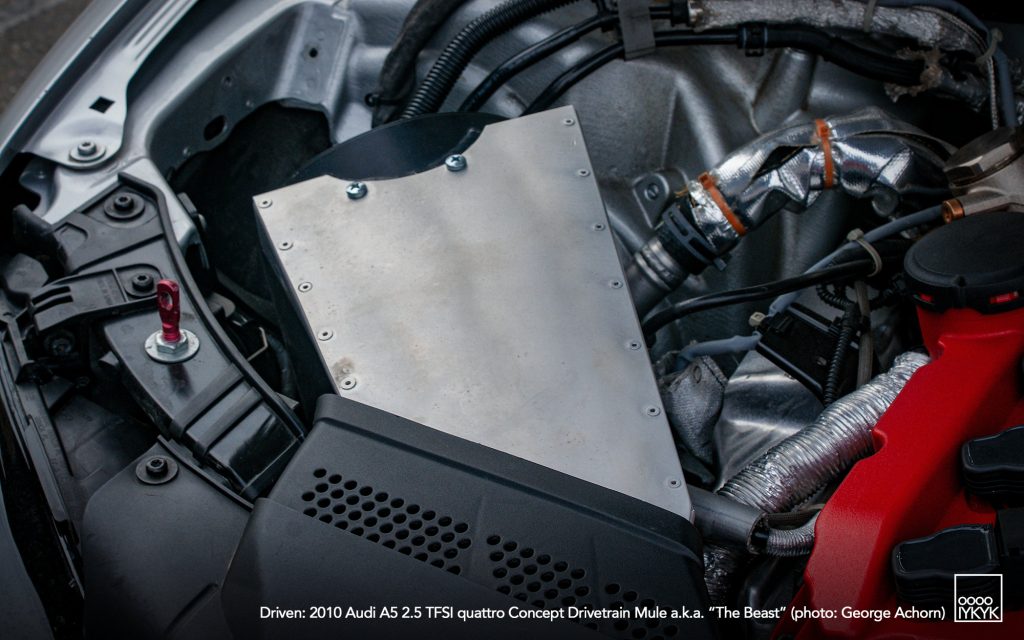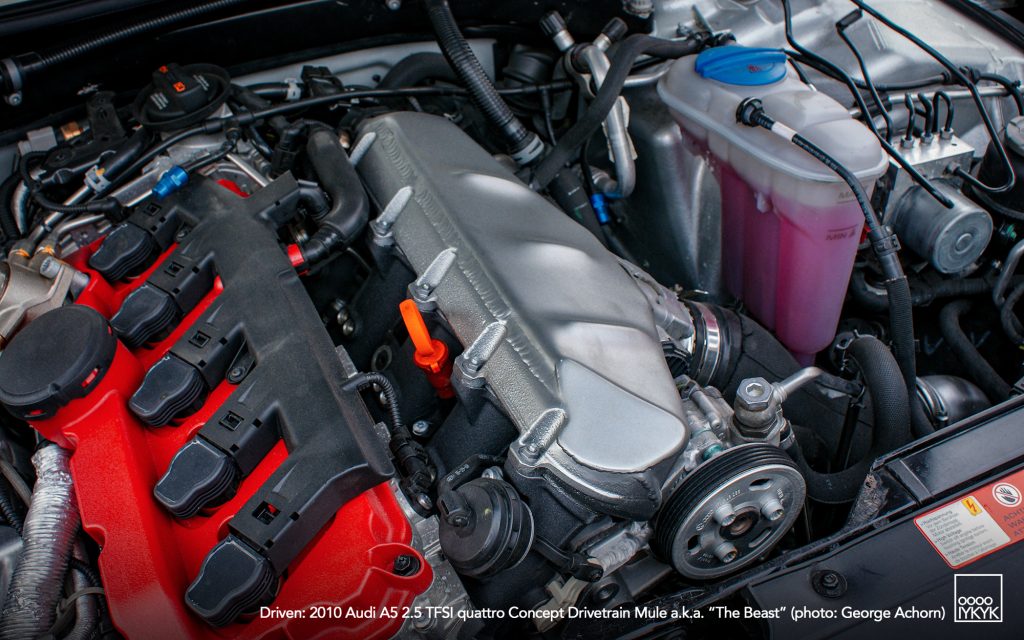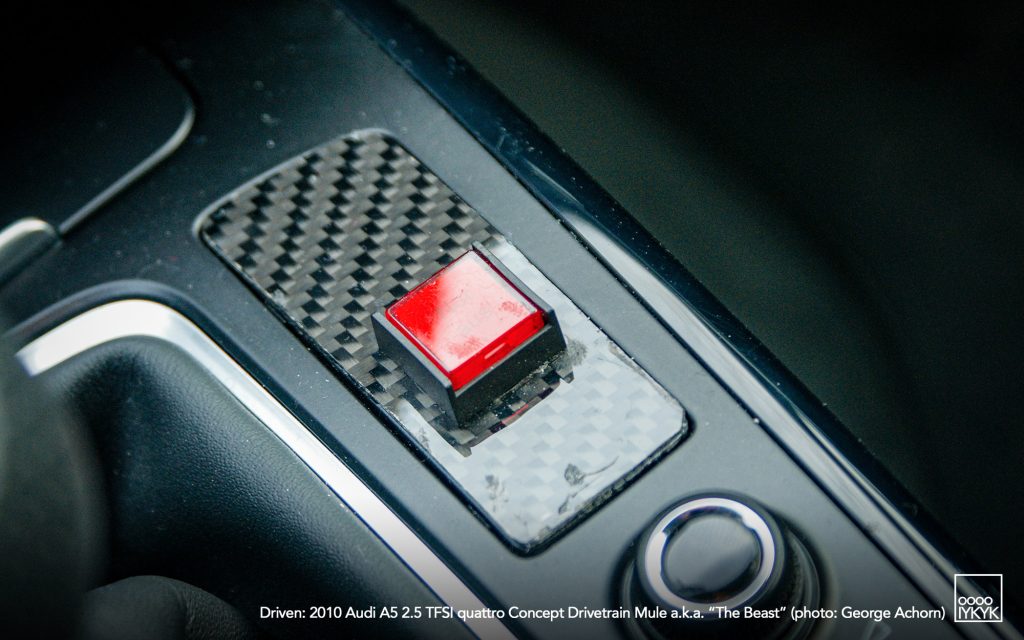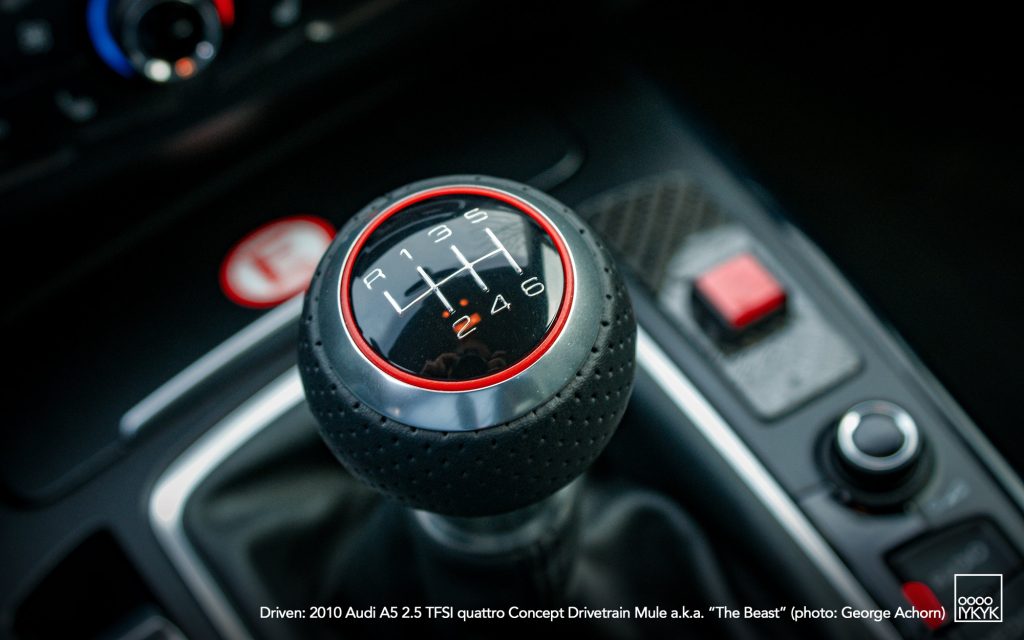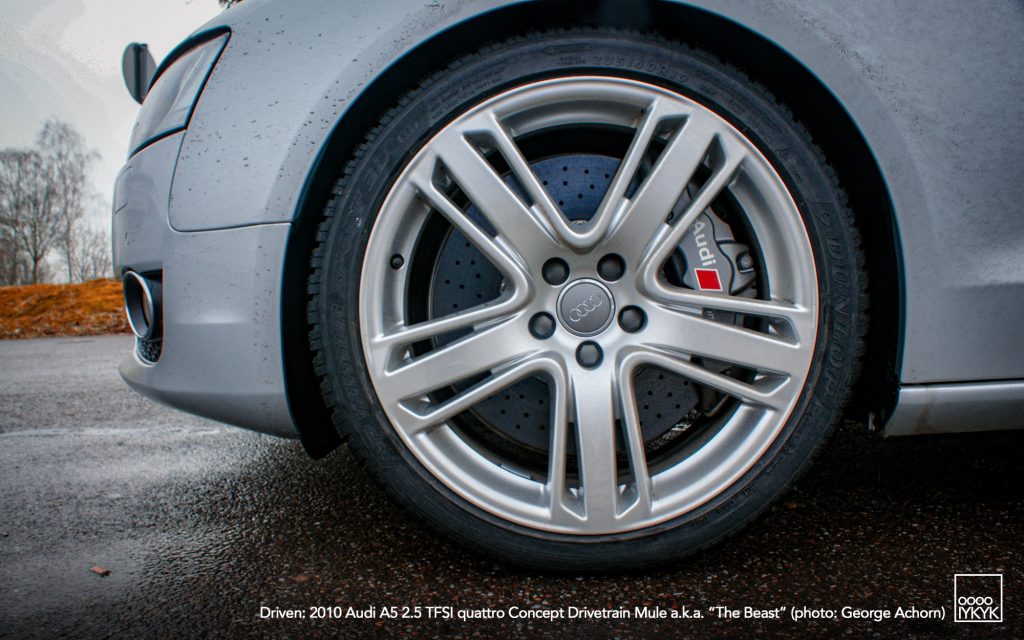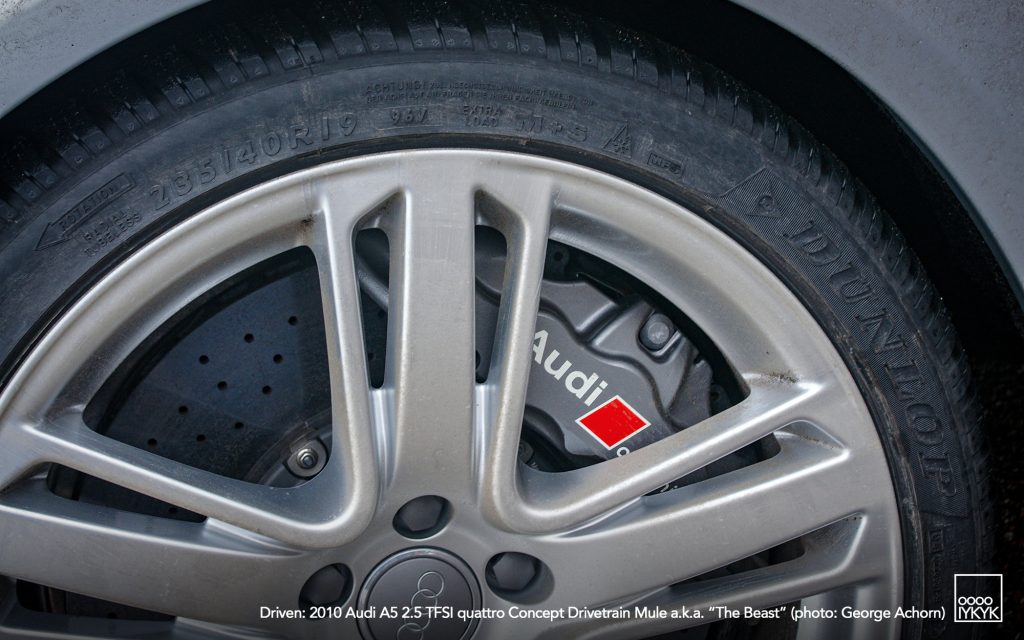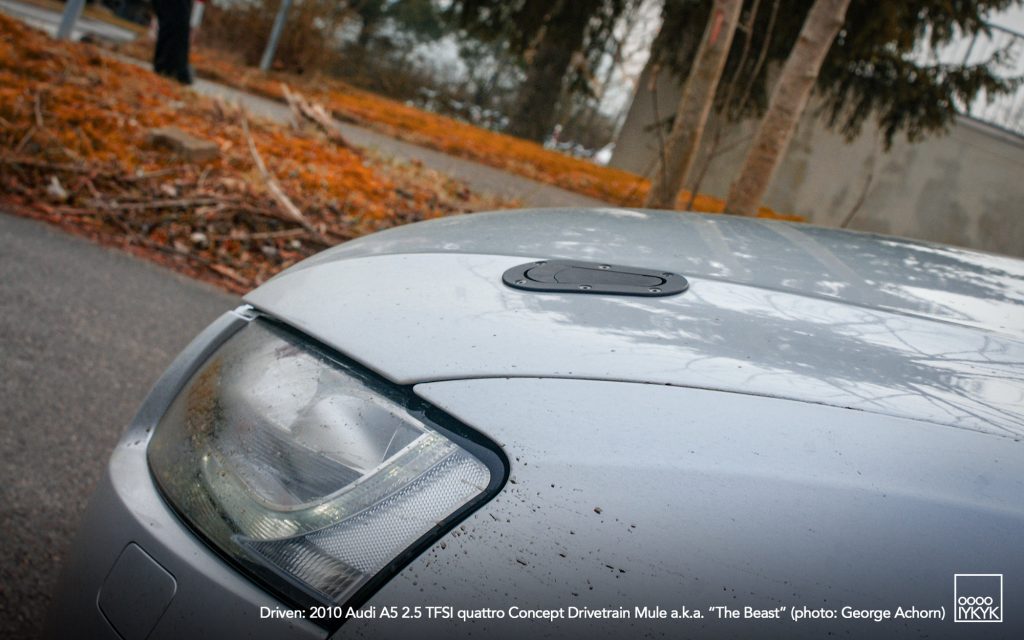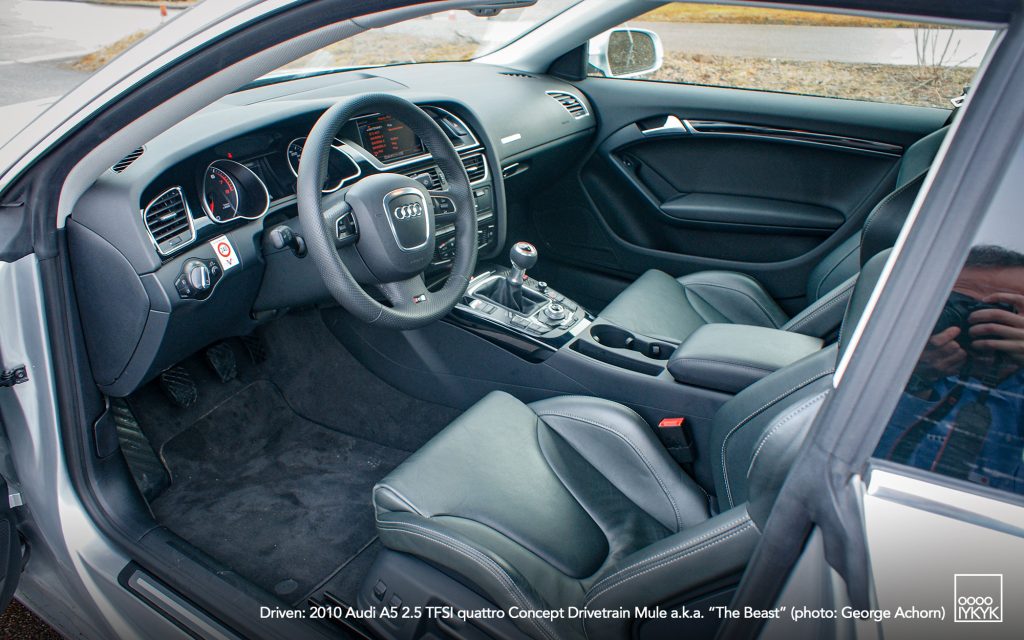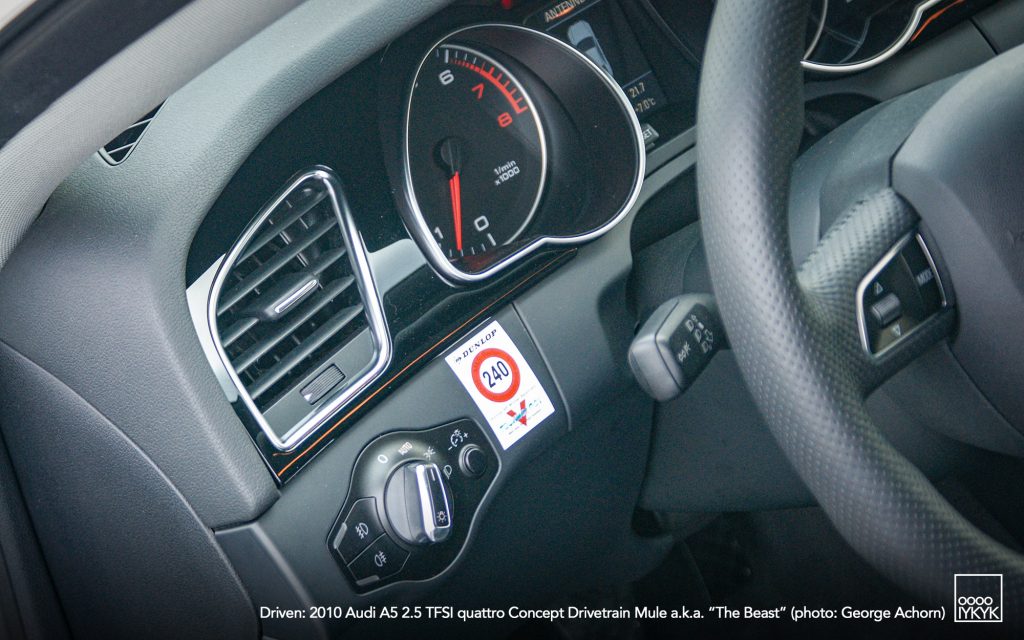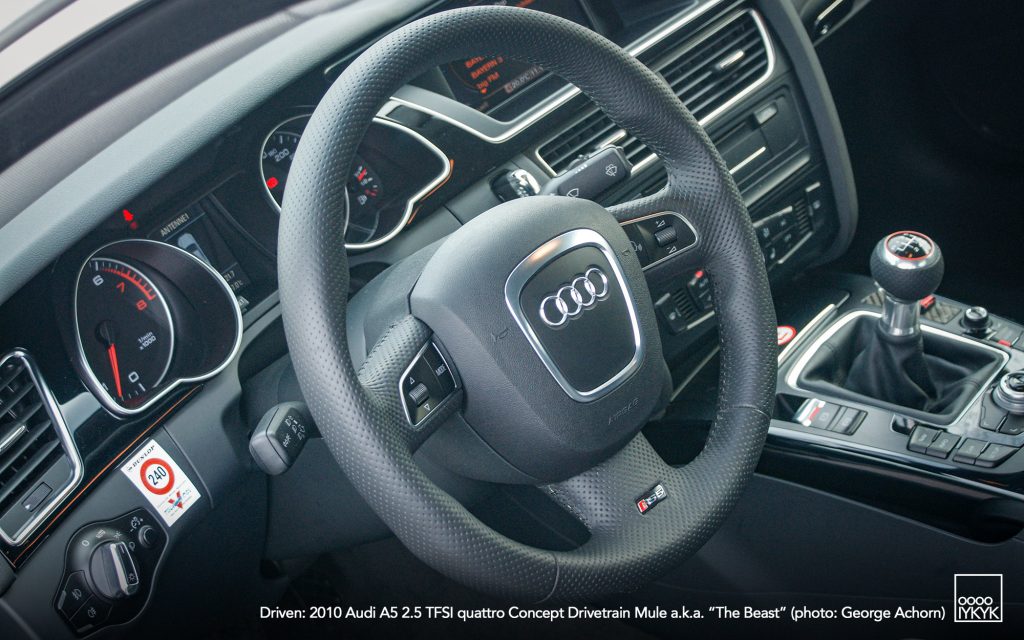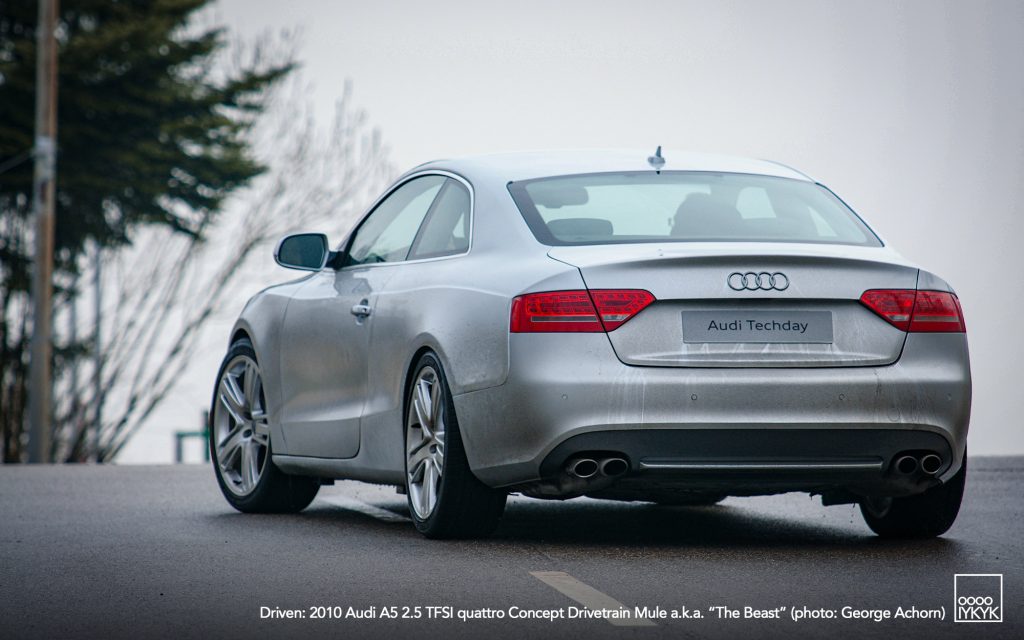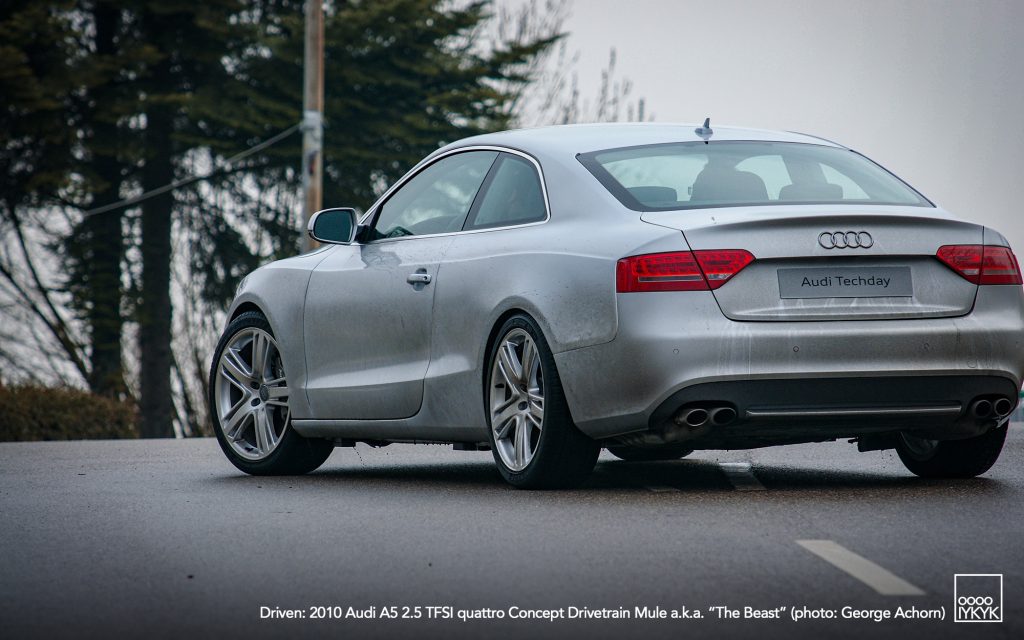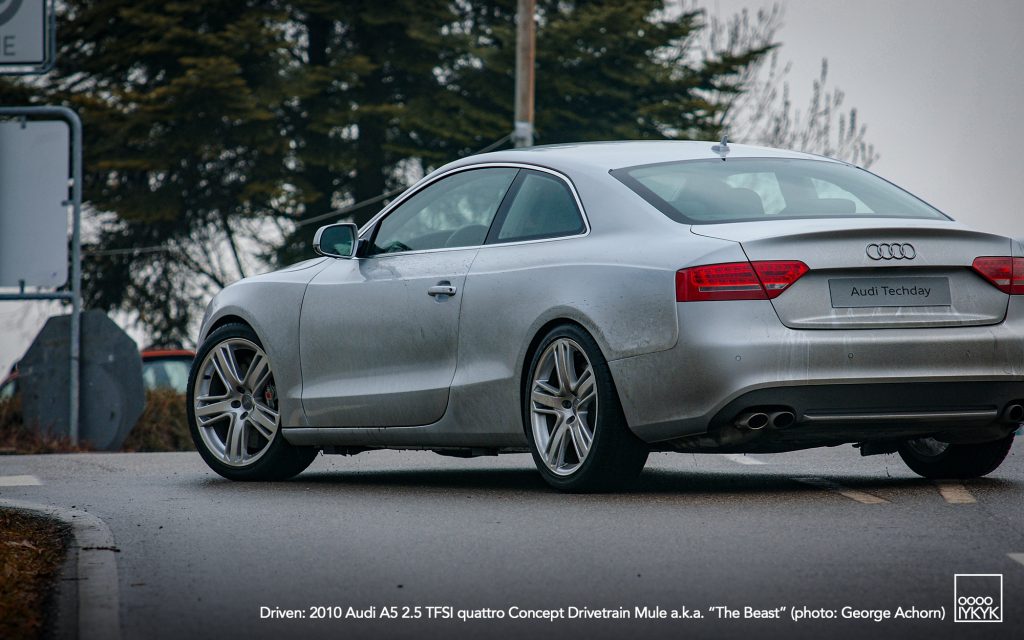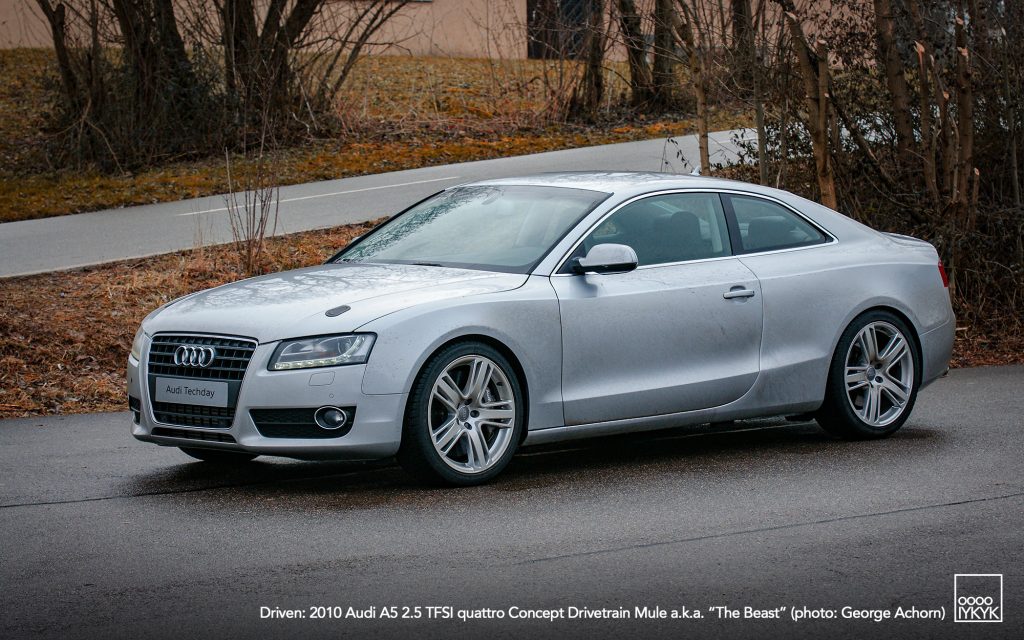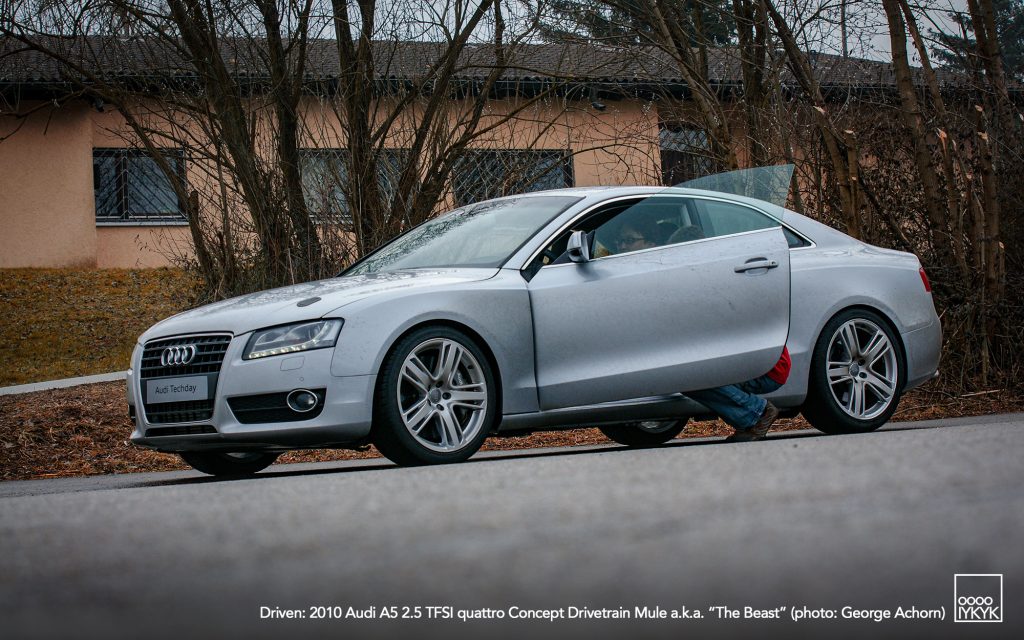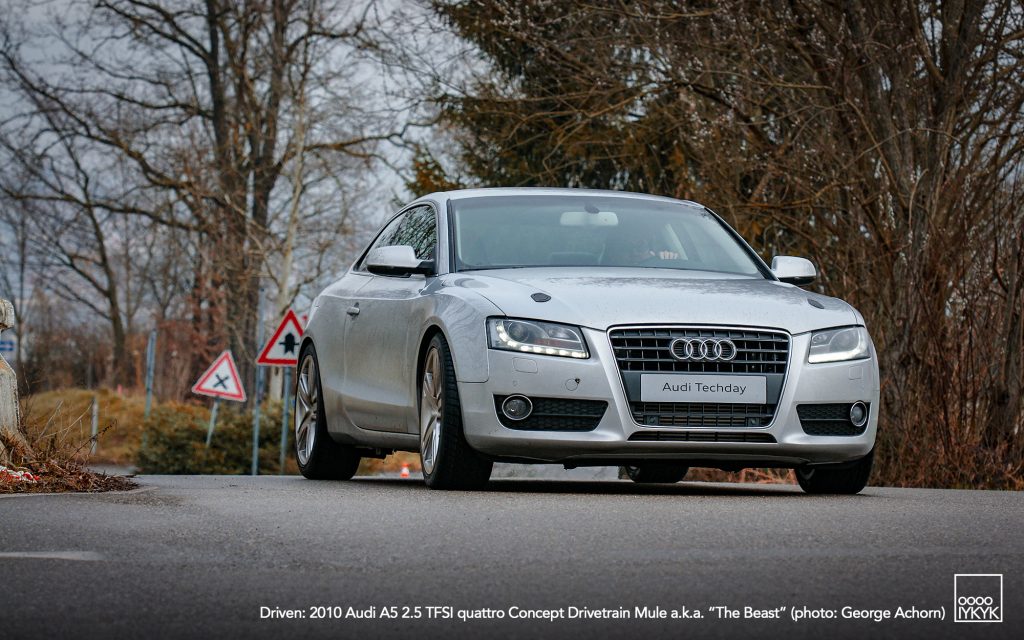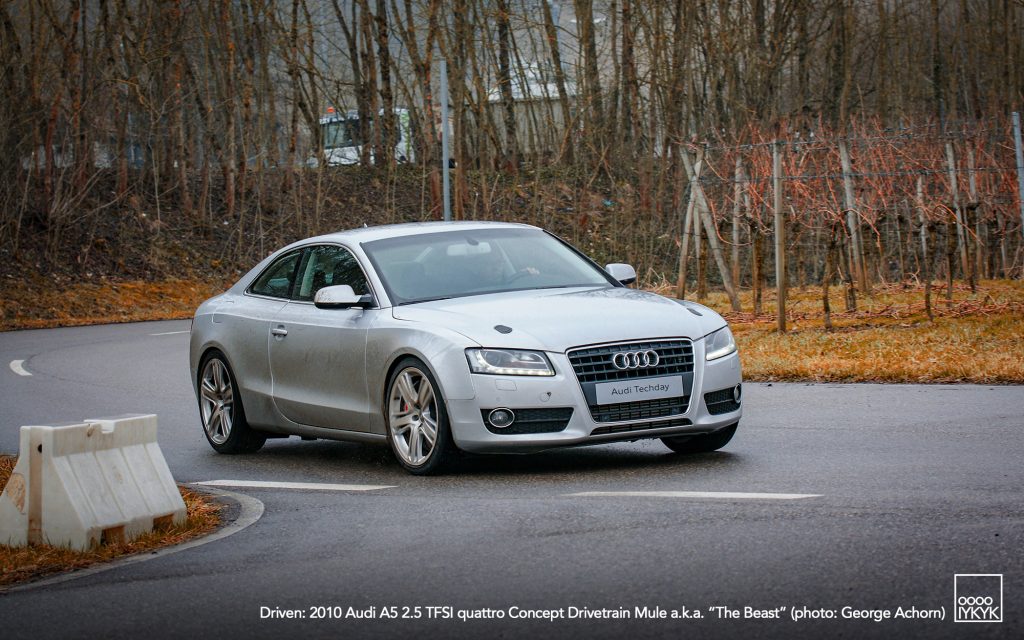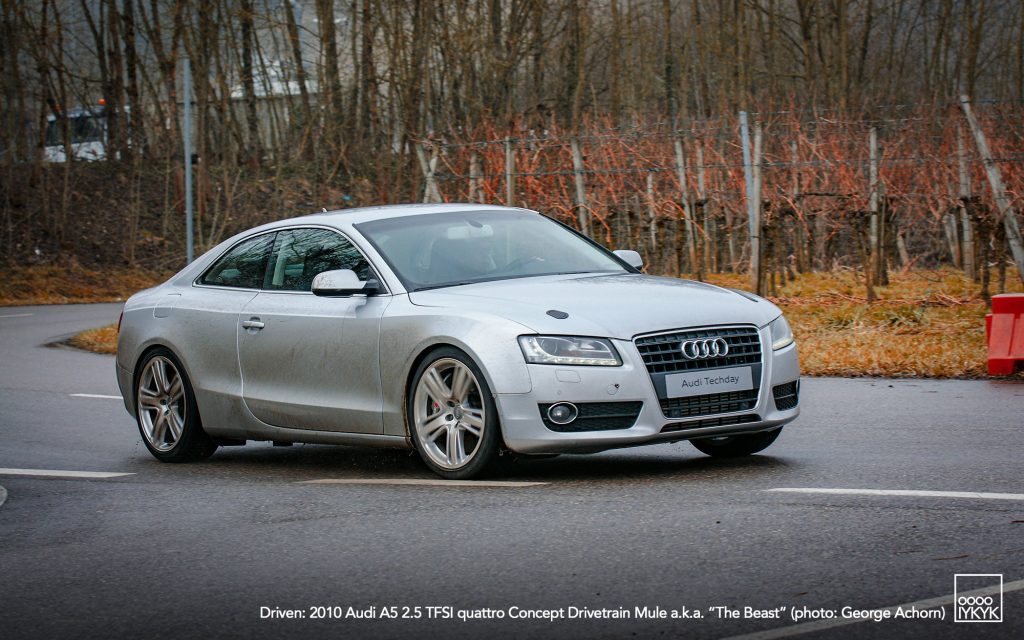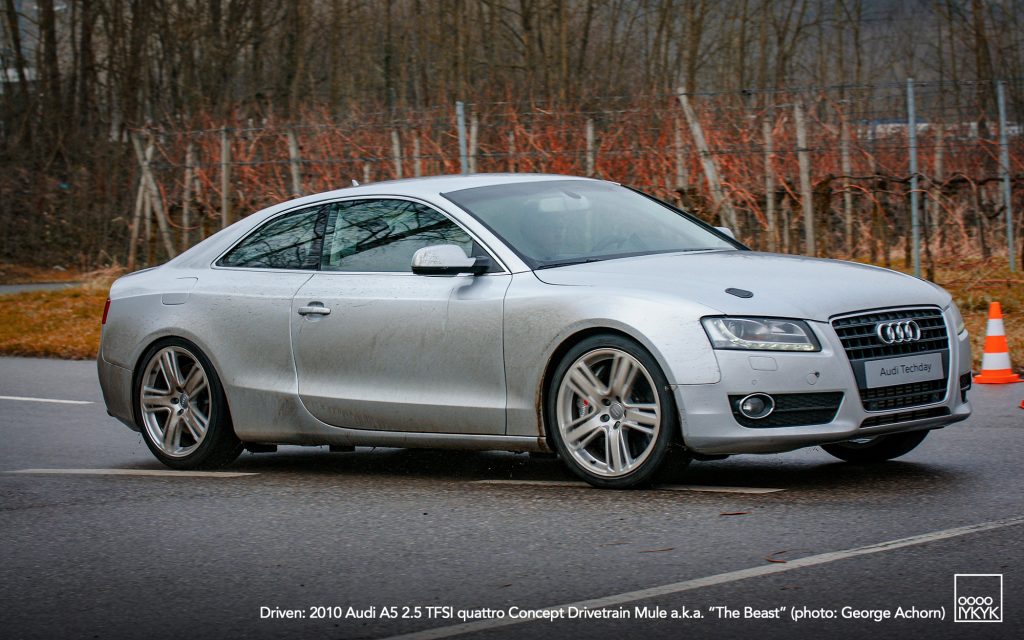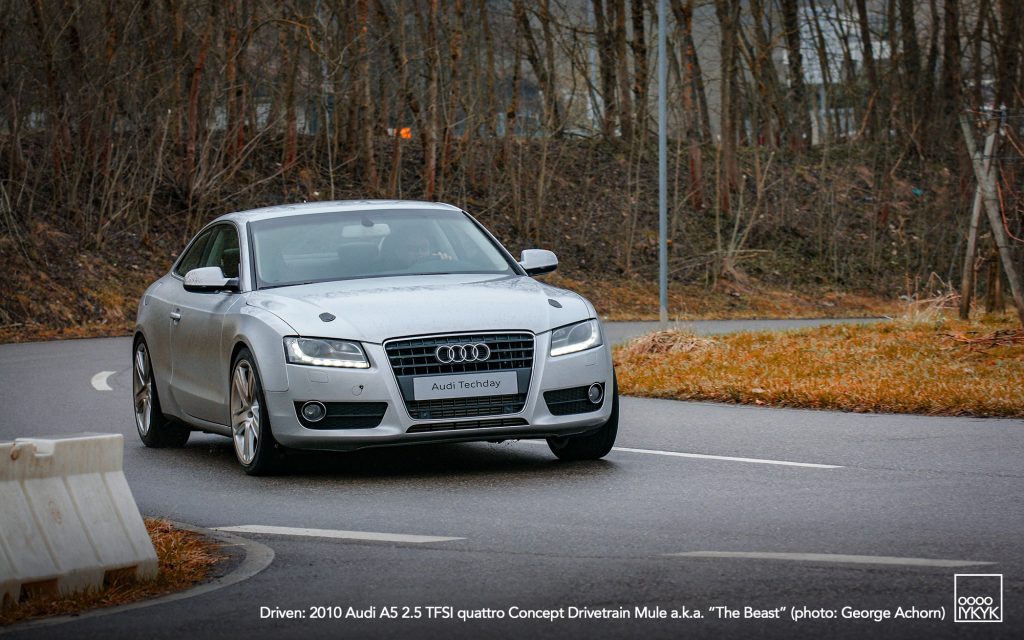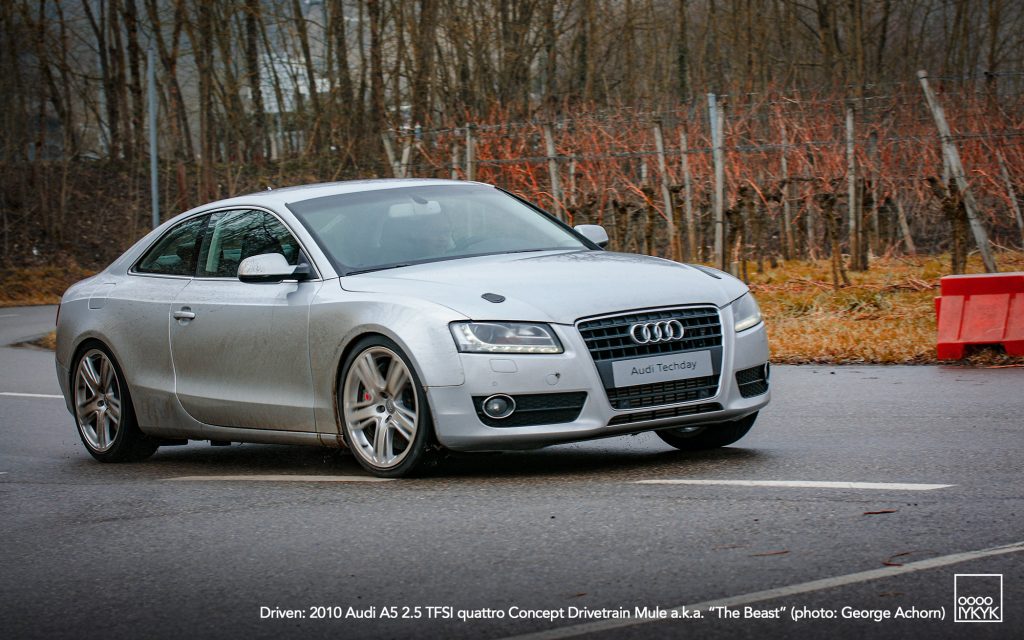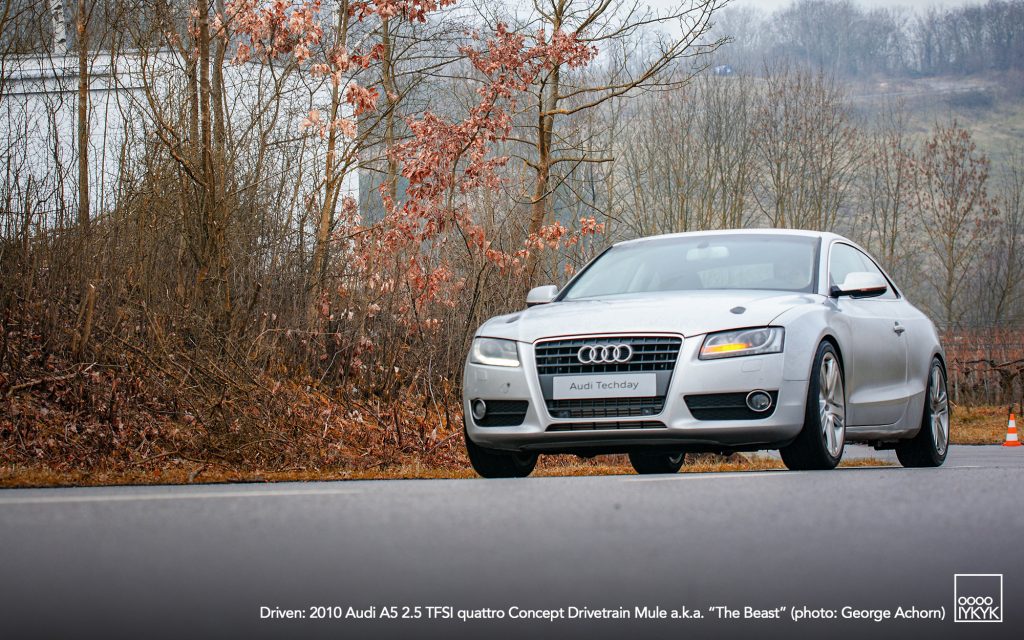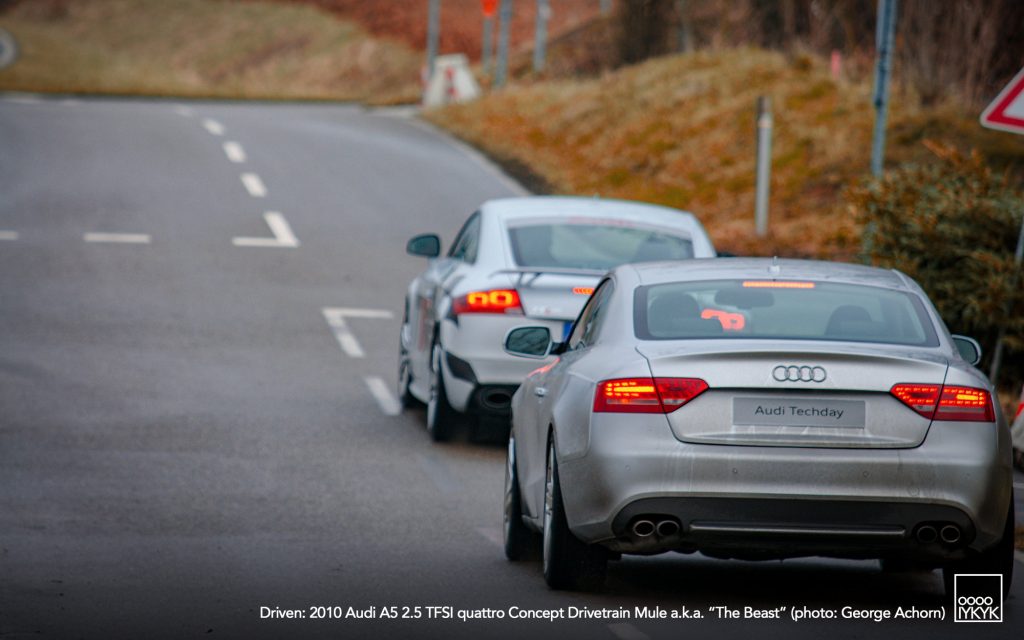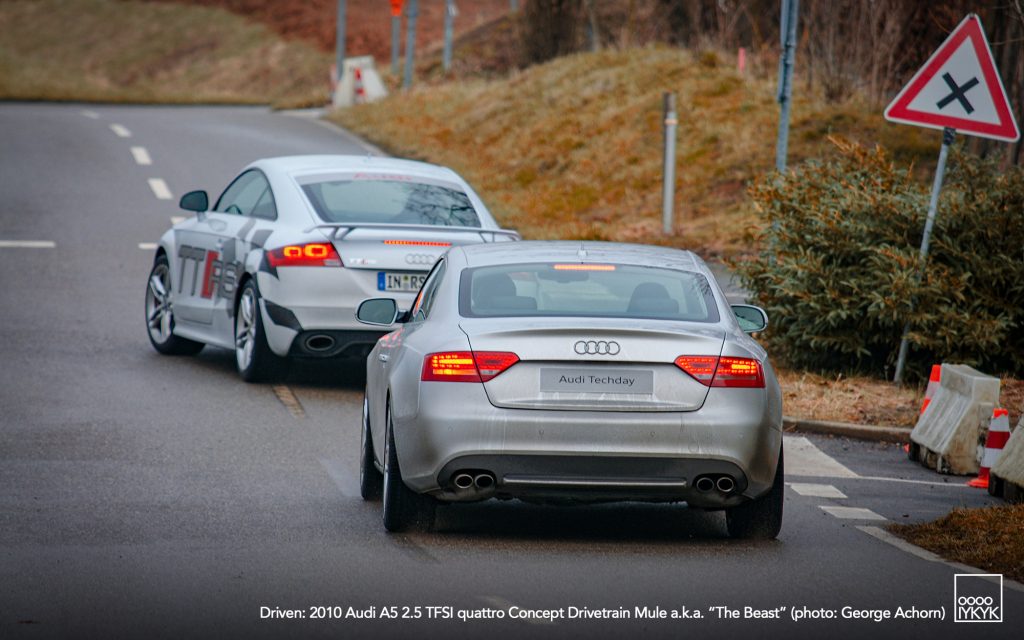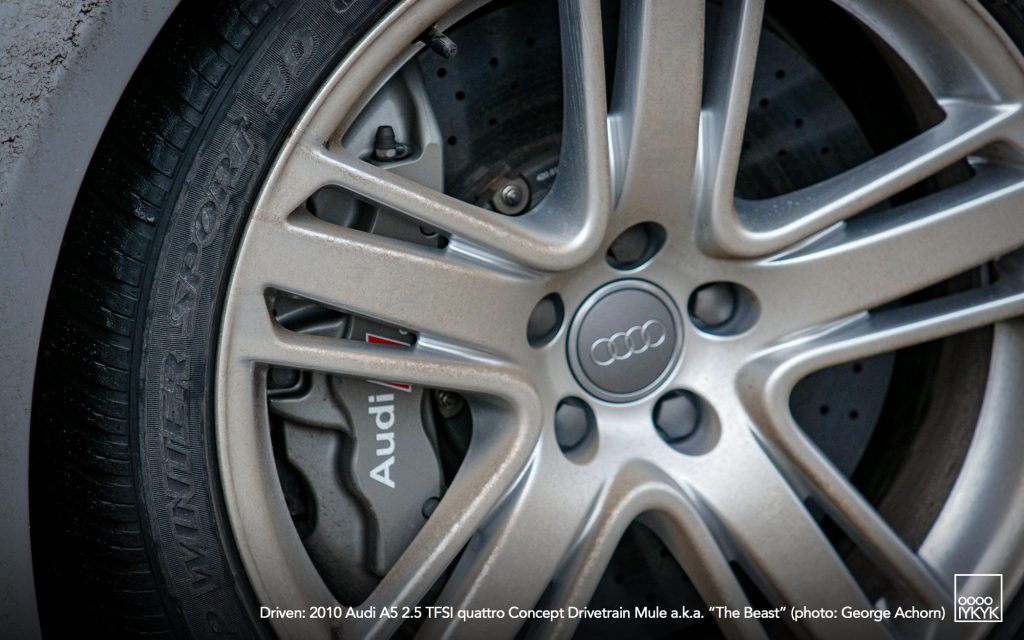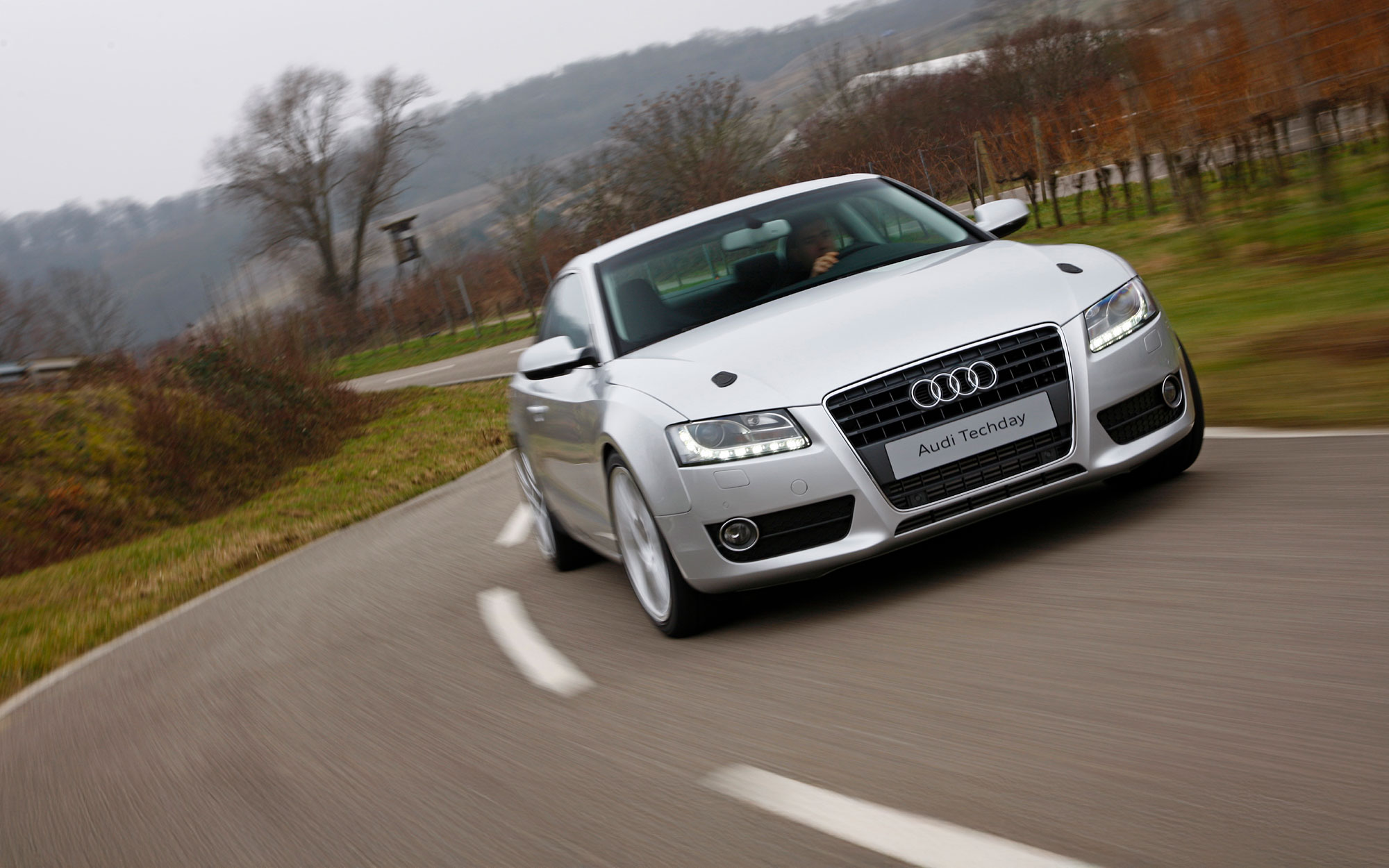The location was a small public driver training facility, just ten minutes from Audi’s Neckarsulm factory—a rather mundane setting to sample what was arguably the coolest B8 A5/S5/RS 5 variant ever produced. Outwardly, the car looked like a stock A5 coupé painted in forget-me silver, fitted with RS 5 winter wheels, and wearing an S5 exhaust with matching rear valance. Underneath, however, was a predominantly aluminum chassis—likely an early experimental prototype of Audi’s then next-generation MLB-Evo architecture—making optimum use of a mix of lightweight materials. One other thing: it had been fitted with a turbocharged five-cylinder engine from the first-generation TT RS, mounted longitudinally and tuned to produce over 400 horsepower.
Editor’s Note: This story is Part 3 in the quattro Redux Series, or direct links to Part 1 and Part 2.
‘
At the time, I was fairly certain I had driven this very car—or one of its identical twins—back in 2009, though it was then fitted with a 2.0 TFSI engine. That drive had taken place at Bosch’s Boxberg test facility, where cameras were strictly verboten due to the prototype nature of nearly every vehicle viewed in every direction.
This time, at a small municipal driver training on the outskirts of Neckarsulm, there were no such photographic restrictions. That was a plus, though I couldn’t help but notice a group of elementary school kinder being taught bicycle safety less than twenty yards away as I approached the A5.
The car was known internally as “The Beast,” according to Peter Seizinger of quattro GmbH. Seizinger was then a Technical Project Coordinator at the division, and he was one of the key people who had effectively installed the quattro Concept’s drivetrain—or, more specifically, installed it “in an RS 5” that was later shipped to ItalDesign as the foundation for the construction of the 2010 quattro Concept. It quickly became apparent to me that “The Beast” was that RS 5.
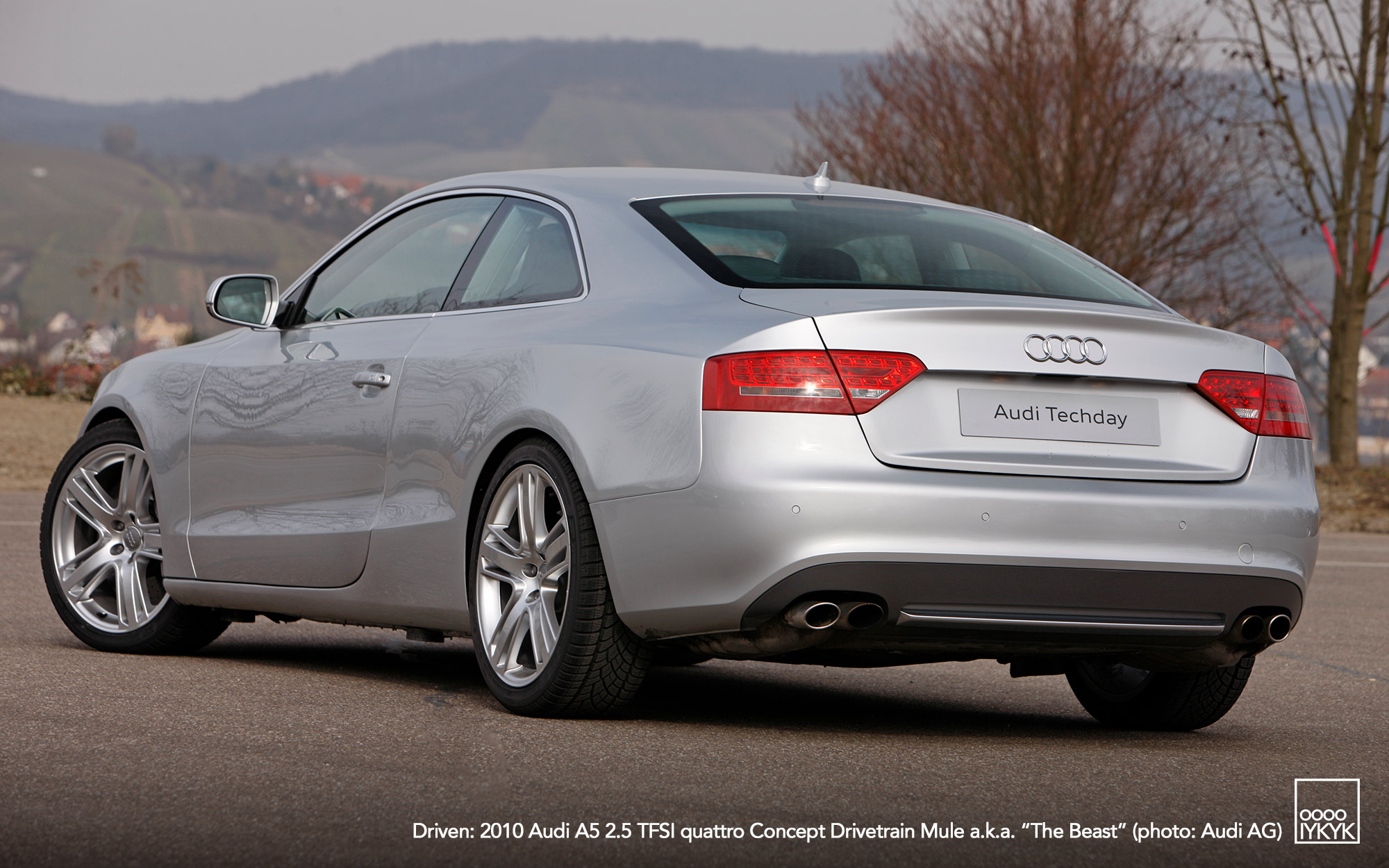
On site, Seizinger was assigned to walk us through the car’s basics. Audi built three or four of these A5s, likely as early lightweight design studies that applied many of the experimental construction methods being perfected for the MLB-Evo platform. This architecture would eventually underpin the next generation of Audi models with longitudinally mounted engines—from A4 to A8 and everything in between.
During a tour of the Audi Lightweight Design Center (ALDC) in Neckarsulm, Ingolstadt had given us a preview of an A4-sized MLB-Evo chassis. As shared in Part 2, this next-generation hardware had been devised to help Audi set new standards in lightweight construction through an optimized mix of materials that maximized strength while minimizing mass. A highly placed source at Audi AG later confirmed to me in Geneva that this car was indeed an early prototype of that construction method. Additional weight savings came from the use of carbon fiber for the hood and trunk lid, as well as aluminum for the doors.
After logging a few thousand kilometers with its original 2.0 TFSI drivetrain, the A5 in question had been handed over to quattro GmbH for a high-performance conversion as part of the evaluation process for the quattro Concept, which was being considered by Audi’s board for both concept and for eventual production. Out went the 2.0 TFSI engine, the standard Torsen all-wheel-drive system, suspension, brakes, and even the seats.
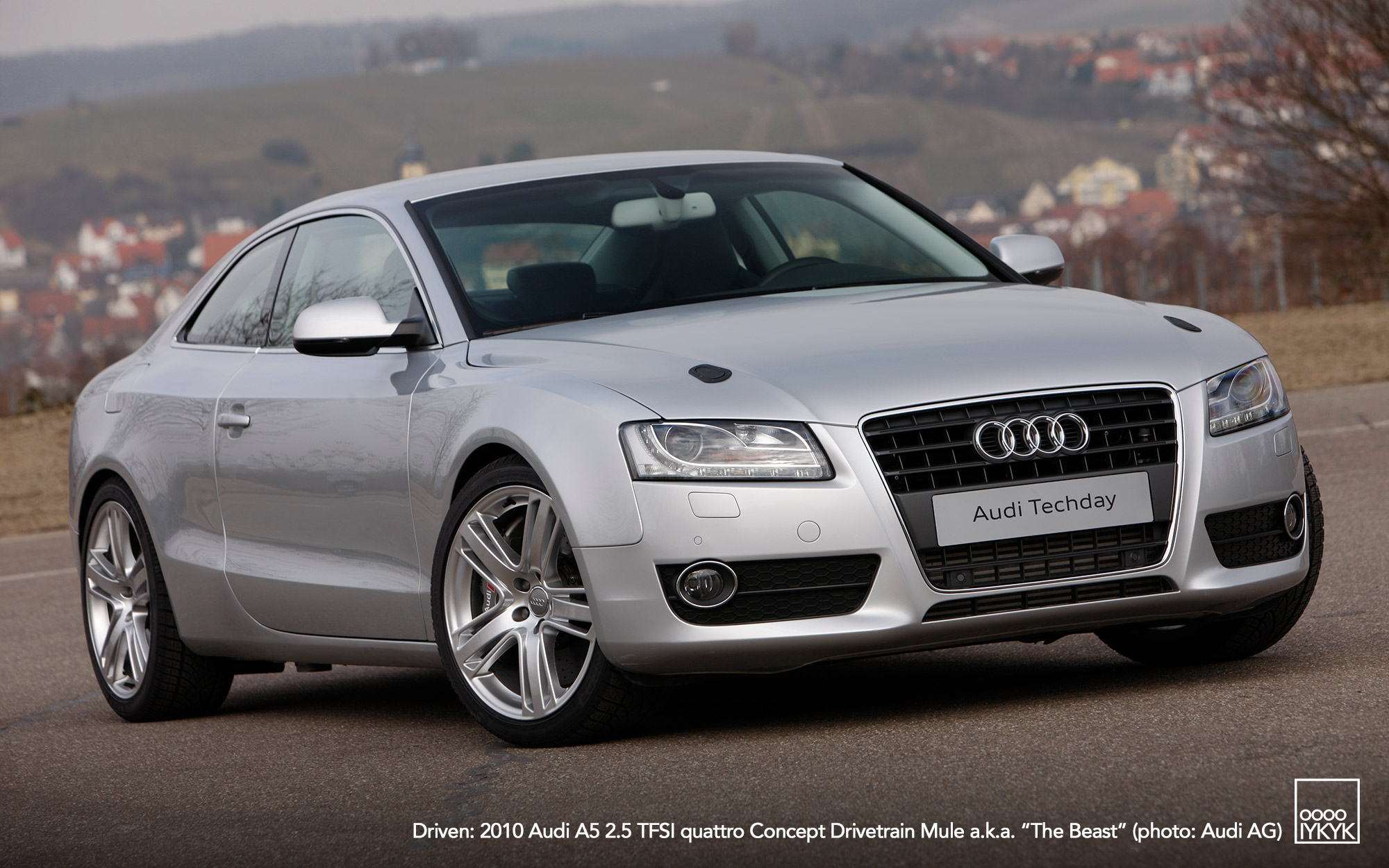
Upgrades for “The Beast” came largely from Audi’s extensive parts bin. Shell-style Recaro seats from the RS 5 provided a more focused driving position while helping to reduce weight. Lighter RS 5 carbon ceramic brakes, suspension, and the aforementioned five-spoke RS 5 winter wheels were also fitted, along with the RS-specification crown-gear all-wheel-drive system.
When it came to the powertrain, Seizinger and his team departed from the RS 5 recipe. They skipped its 7-speed S tronic gearbox—both for its weight and perhaps to preserve some manual-transmission purity—and instead opted for a six-speed manual from the S4. Finally, in went the fan-favorite 2.5-liter turbocharged five-cylinder from the TT RS and RS 3.
In standard form and amongst its period peers, Audi’s 2.5 TFSI was second only to the Bugatti Veyron Super Sport in power efficiency when measured in horsepower per liter. However, the version planned for the quattro Concept and first tested in “The Beast” produced over 400 horsepower—enough to knock the Veyron down a peg in regard to displacement output.

The engine’s intake manifold and airbox were redesigned for packaging reasons rather than performance. The 2.5 TFSI was both taller and longer than Audi’s V10, requiring a lower-profile manifold to fit beneath the A5’s hood and later, the concept car’s shorter front end.
Audi never permitted me to take under-hood photos of the quattro Concept, but at the driver training center that day, staff had no objections when The Beast’s carbon fiber hood was lifted.
I was told The Beast weighed in at just 3,086 pounds (1,400 kilograms)—more than 661 pounds (300 kilograms) lighter than the RS 5. That was impressively light, though Audi’s engineers were targeting an additional 220-pound reduction if the quattro Concept had reached production.
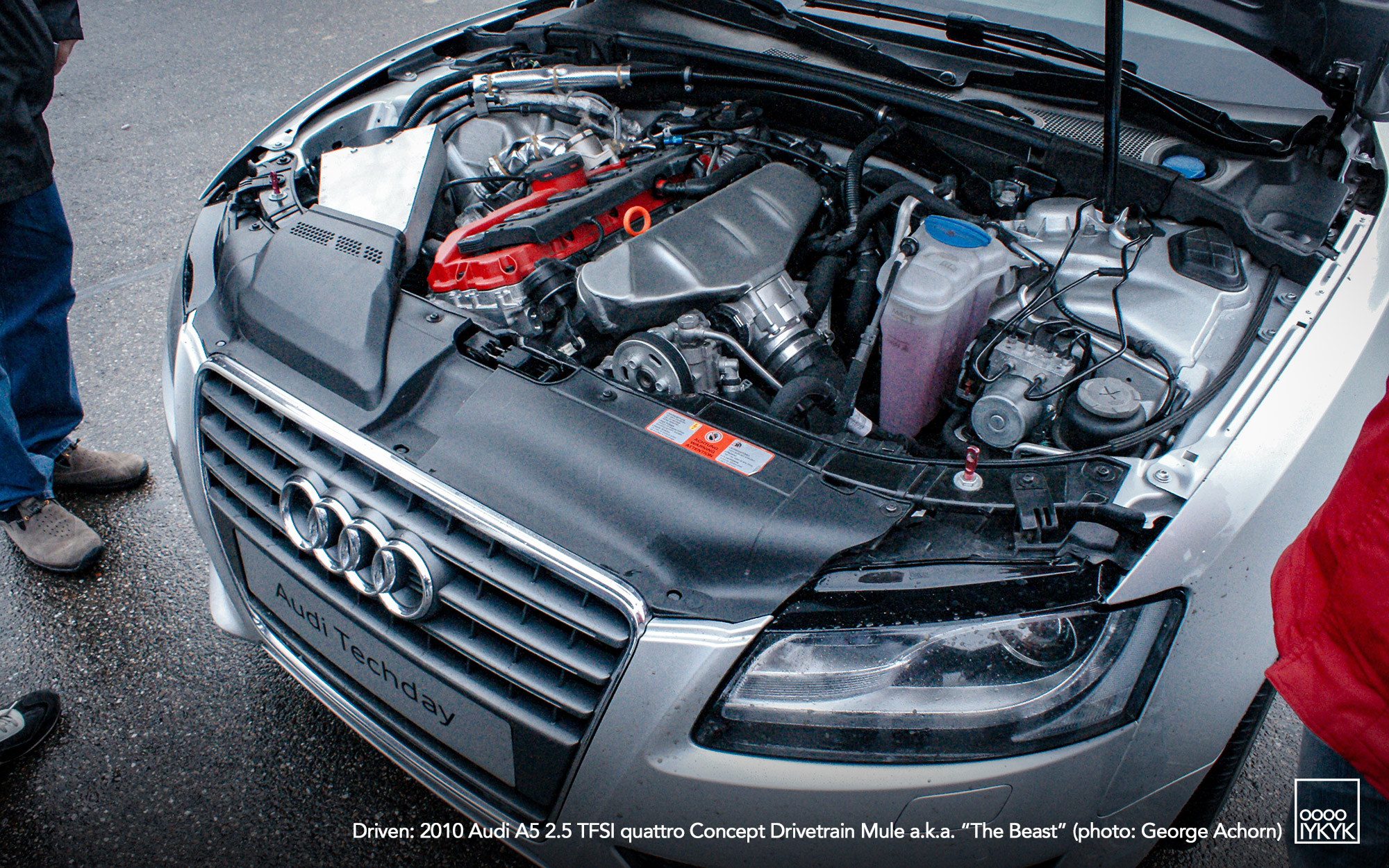
Sliding into the car, I immediately noticed the changes. The production-level interior I’d experienced in the earlier 2.0-liter version was still present, but the Recaro seats transformed the driving experience. The only other giveaways to its prototype status were a red trim ring on the shift knob and an engine kill switch mounted to the right of the shifter where the coin holder would normally be positioned—standard safety equipment for test mules, I was told.
Audi staff allotted me three quick laps on the tight course within the facility—not much, but enough to get a sense of the lightweight setup’s dynamics. On the first lap, it was immediately clear that this car existed in a different league—much more nimble, neutral and eager to deliver power.
Revs and boost came on quickly—not quite as instantaneous as in the RS 5, but with noticeably less lag than I remembered from the quattro Concept I had driven the previous year. That experience will come in Part 3, and it’s worth noting that conditions were very different. With the quattro Concept, I’d driven a priceless one-off up a closed stretch of Decker Road in the canyons near Malibu, with a cliff face on one side and a sheer drop (complete with wrecked cars) on the other. With The Beast, I was alone on a closed course behind the wheel of a 9,800-kilometer test mule, free to push as hard as I wanted—as long as I didn’t rear-end the TT RS pace car ahead of me.
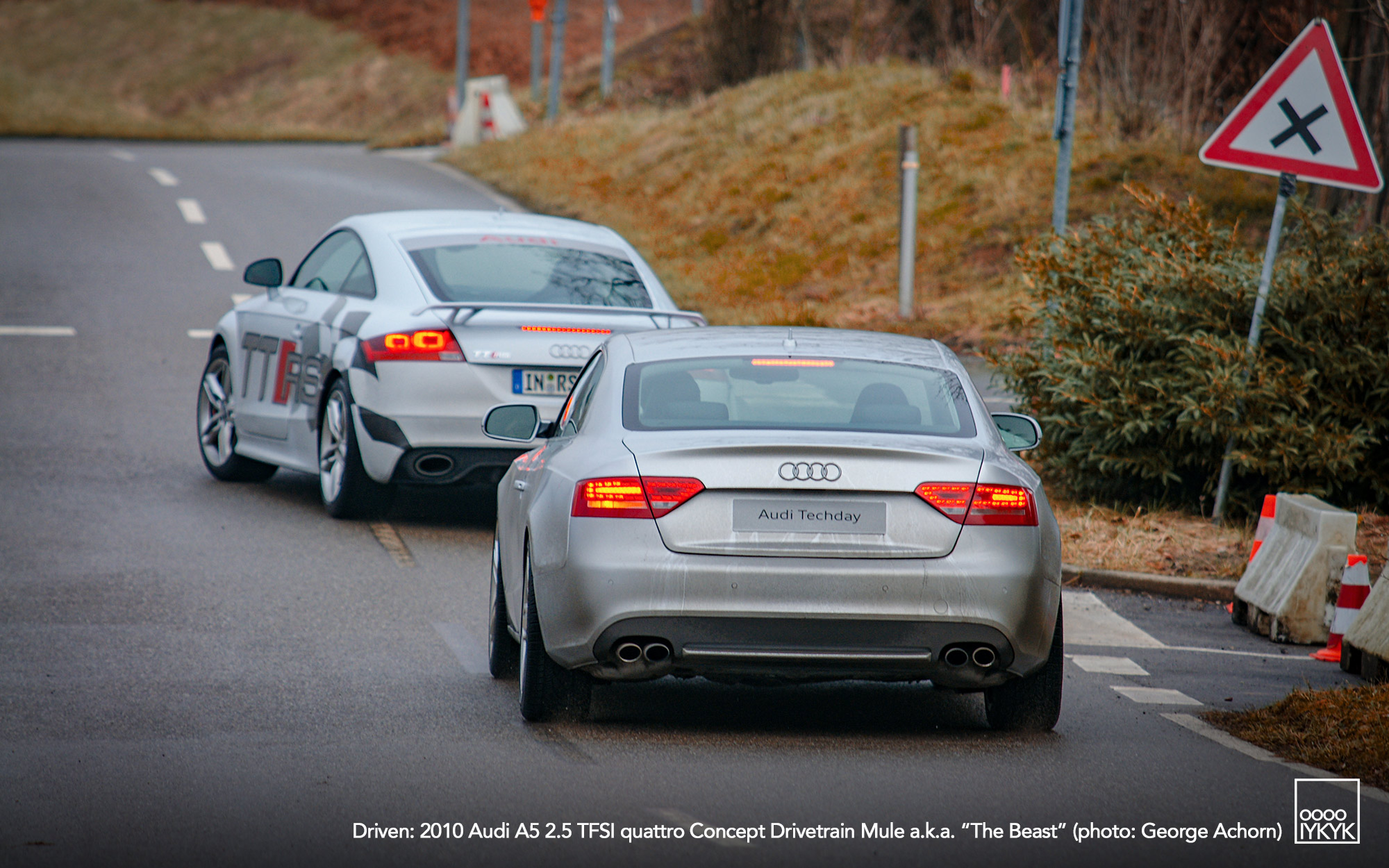
Through each corner, I was struck by how light and agile it felt. The car still leaned like an RS 5, which is to say it leaned more than the go-kart-like TT RS with lower center of gravity, but the A5’s grip seemed limitless. Understeer was nonexistent during my three laps, and on the straights, it pulled like no A5, S5, or RS 5 I had driven before.
Audi claimed at the time that The Beast could reach 62 mph in “the low four seconds.” For comparison, the contemporary B8 RS 5 achieved the same sprint in 4.6.
So why let journalists like me drive the Beast? In that era, Audi was pushing technical boundaries like few others and wanted to showcase its innovation. The car added some excitement to what might otherwise have been a dry day of classroom discussions on lightweight design. By then, The Beast had fulfilled its purpose—convincing Audi’s board to greenlight the quattro Concept—and now served as a dynamic ambassador for the company’s engineering prowess. Though surely valuable, as a test mule it was meant to be driven.
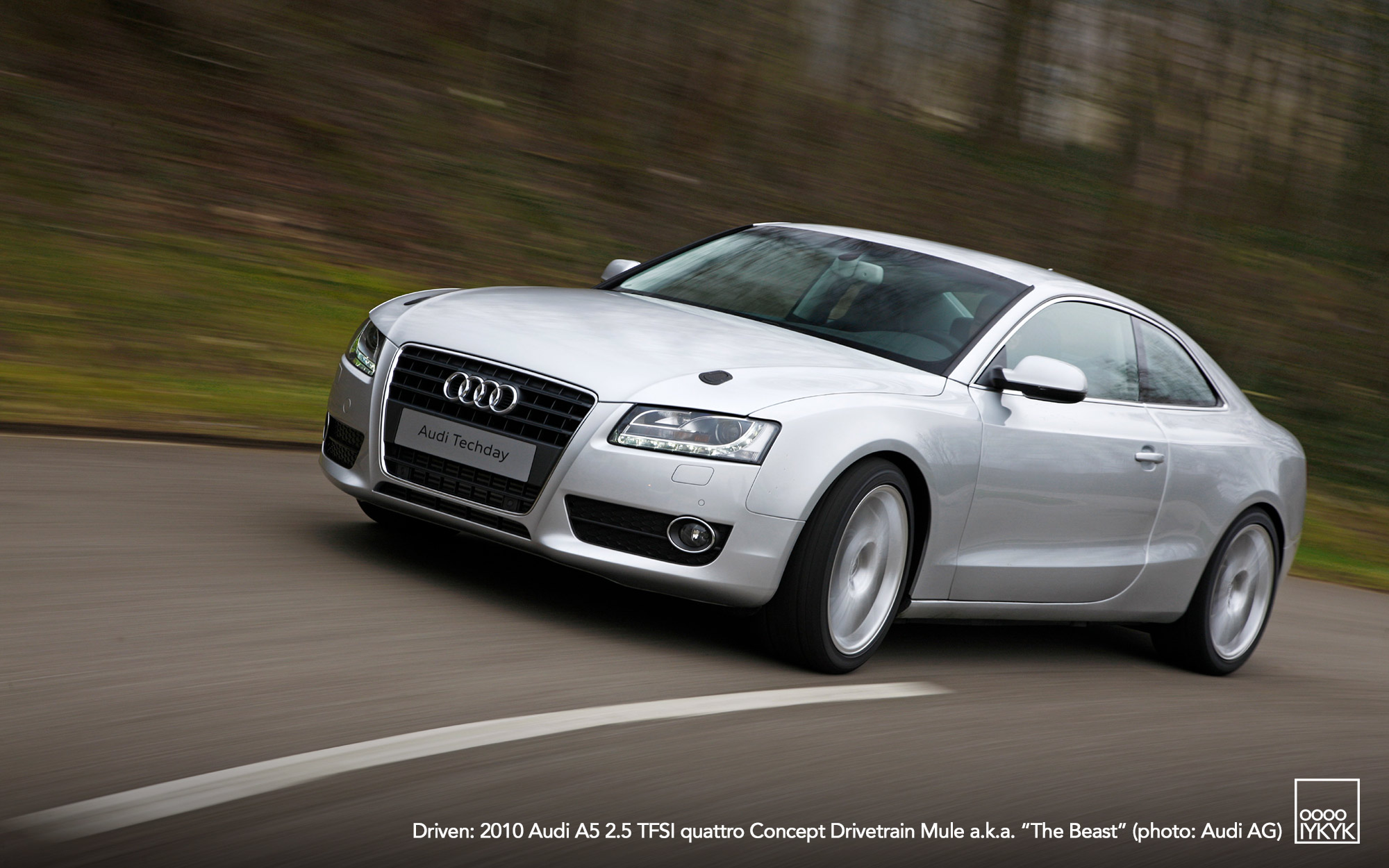
It’s important to note that Audi never officially described The Beast as a drivable prototype of MLB-Evo, though my research strongly suggested that’s exactly what it was. In that sense, it also foreshadowed a future RS 5—lighter, smaller in displacement, yet even more capable.
As for the Beast’s fate, that remains a mystery. Some prototypes survive in Audi Tradition’s internal collection—the quattro Concept among them—but I’ve seen no trace of this car since. Subtle as it was, it would be difficult for most casual observers to identify even if it had survived.
That said, Audi doesn’t tend to preserve its test mules as readily as Porsche does. Despite its lightweight construction and potent five-cylinder powerplant making it highly desirable to enthusiasts, its unassuming exterior may have sealed its fate along the usual path of preproduction cars: eventual destruction.
If you’re at Audi and know what became of The Beast, drop me a note. I’d love to update this story with that missing piece—especially if it’s a happy ending in which the car wasn’t crushed.
PHOTO GALLERY
